Iran’s Threat to Maritime Security
Download PDFPage Navigation
Introduction
Iran is a major threat to freedom of navigation and maritime security around the world, not only in the Persian Gulf but also in the Red Sea via its Houthi partner based in Yemen. Iran uses the Islamic Revolutionary Guard Corps’ Navy (IRGCN) and the Artesh Navy to challenge global economic security and the broader regional security architecture. Furthermore, Iran has used international shipping companies to illegally transport weaponry—violating multiple United Nations Security Council Resolutions (UNSCR) and international law—in order to build and sustain its terror proxy network in the Middle East, throughout Lebanon, Syria, Yemen, and Somalia. It has also attacked commercial vessels and taken vessels hostage to extract concessions from the international community.
Since the October 7, 2023 Hamas terrorist attack against Israel and the subsequent war in Gaza, the Houthis have conducted regular attacks against international shipping and naval assets deployed to the Red Sea. While claiming to target vessels enroute to Israel in solidarity with Hamas, the group has fired anti-ship missiles, drones, and even unmanned underwater vehicles indiscriminately at vessels transiting the Red Sea, causing major disruptions to international shipping. As a consequence, shipping companies have rerouted their vessels around the Cape of Good Hope, South Africa, to avoid the Bab al-Mandeb chokehold.
However, the problem is broader than the Bab al-Mandeb Strait. Iran’s malign behavior in this sphere prompted the U.S. Department of Transportation’s Maritime Administration to issue numerous advisories with warnings for merchant vessels operating in the Persian Gulf, Strait of Hormuz, Gulf of Oman, Arabian Sea, Gulf of Aden, Bab al Mandeb Strait, Red Sea, and Western Indian Ocean.
After the adoption of the Joint Comprehensive Plan of Action (JCPOA) in 2015 and to this day, the Iranian weapons shipments continue. Iranian naval vessels continue to take dangerous and hostile actions against international commercial ships, the U.S. Navy, and the U.S. Coast Guard. In addition, Iran frequently carries out unmanned aerial vehicle (UAV), mine, and missile attacks on Israeli-linked vessels in the Persian Gulf. Foreign shippers, therefore, risk the safety and well-being of crew members when transiting in international waters near Iran.
Following the Trump administration’s withdrawal from the JCPOA in 2018, the U.S. government expanded sanctions on Iran’s shipping sector. On October 26, 2020, the U.S. Treasury Department sanctioned the National Iranian Tanker Company (NITC), which operates a fleet of oil tankers in coordination with and to the financial benefit of the sanctions-designated Islamic Revolutionary Guard Corps (IRGC) Quds Force.
Yet, oil revenue continues to fund the IRGC’s Quds Force as well as Iranian-backed proxies throughout the region, such as the Houthis and Hezbollah. The IRGC is not only deeply involved in the shipment of oil, but the operation of Iranian ports. IRGC-owned companies, such as Tidewater Middle East Co., operate some of the most lucrative Iranian ports, including the Shahid Rajaee Container Terminal at Bandar Abbas Port, where 1.14 million 20-foot containers were loaded and unloaded between March 21 and November 6, 2021. During that time, 20.3 million tons of oil were exported through this port. Given that the IRGC owns Tidewater, the company was sanctioned in 2011 and continues to be sanctioned by the U.S. Treasury Department.
The IRGC masks its involvement in the Iranian shipping sector through a complex and layered network of front companies, leading international shippers to risk paying loading, docking, and other port fees to an internationally sanctioned terrorist group. Furthermore, foreign shipping companies risk unwittingly becoming entangled in shipments of oil, weapons, or other illicit materials when they choose to do business in the Iranian shipping industry. In order to halt these shipments and revenue streams, international shippers must cease their business with Iran. The Biden administration should sanction any entity that continues to do business in the Iranian shipping industry, in violation of U.S. sanctions.
This report documents 34 specific instances in which the IRGCN harassed, hijacked, abducted, or seized seafaring vessels on international waters; 29 interdictions of Iranian weapons or drugs at sea; 22 unsafe and unprofessional maneuvers by the IRGCN in close proximity to U.S. Navy vessels; and 14 IRGCN UAV, missile, or mine attacks at sea. Additionally, it details 30 high-profile Iran-backed Houthi attacks at sea and other instances of Iran’s menacing of maritime channels and its exploitation of the shipping industry to nefarious ends. Between early November 2023 to late February 2024, UANI documented over 55 Houthi attacks.
The following graph depicts on a year-by-year basis the total number of instances in which Iran threatened maritime security from 2016 to the present. It is noteworthy that Iran’s vessel seizures increased markedly in 2019, the same year in which the U.S. ended the significant reduction exemptions (SREs), which allowed for certain countries to import limited amounts of Iranian oil. Over the Trump administration’s four years in office, there were a total of 52 documented incidents that threatened maritime security. Since Biden took office, there have been almost double that. Such an increase in these threats has corresponded with an increase of Iranian or Iran-backed attacks on American ground forces stationed in the Middle East, with a total of over 170 such attacks between October 17, 2023 and February 2024.
Timeline of Incidents
-
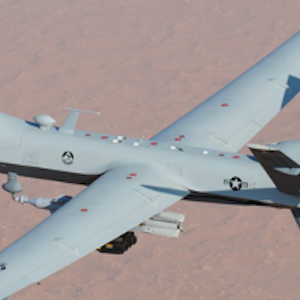
Reaper Drone Incident
Date: February 19, 2024
The Houthis shot down a U.S. Air Force MQ-9 Reaper drone, a $30 million dollar combat and ISR drone, as it was operating near the coast of Yemen. This was the third time since 2019 that the Houthis downed the Reaper drone with a surface-to-air missile (SAM). The other incidents occurred in June 2019 and in November 2023.
-
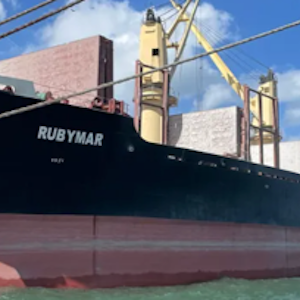
Rubymar Incident
Date: February 19, 2024
The crew from the Rubymar was forced to evacuate their ship after it was hit by two Houthi missiles, 35 nautical miles south of al-Mukha, Yemen. It was the most damaging Houthi attack to date, causing the vessel to take on water. There were two additional attacks that occurred later on the same day against vessels identified by the Houthis as the Sea Champion and the Navis Fortuna.
-
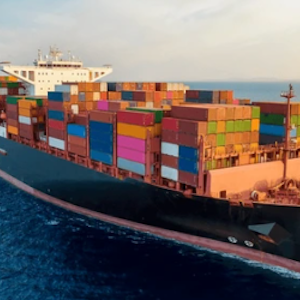
Underwater Drone Incident
Date: February 18, 2024
The Houthis employed an underwater drone for the first time since they began their campaign to disrupt international shipping in the Red Sea in late October 2023. The U.S. military intercepted this drone and a surface drone and also launched strikes on Houthi targets in Yemen. CENTCOM did not provide details on the underwater drone itself.
-
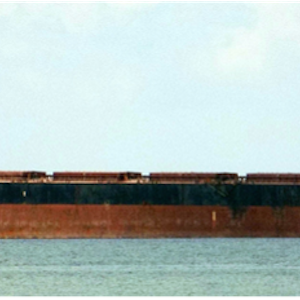
Star Iris Incident
Date: February 13, 2024
The Star Iris was struck with a Houthi missile, causing some damage but no injuries, as it was transiting the Red Sea with corn from Brazil enroute to Iran. The Houthis claimed that the vessel was owned by an American company, but that claim was refuted. The vessel is owned by a Greek company.
Like most other Iran-bound bulk carriers, this vessel did not reroute to avoid the Red Sea. It was the first time an Iran-bound vessel was targeted by the Houthis. The attack comes on the heels of a U.S. cyberattack on the Iranian Behshad, which is a vessel patrolling in the Red Sea and providing real-time targeting assistance to the Houthis.
-
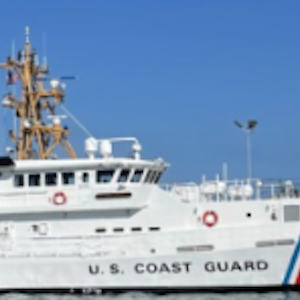
USCGC Clarence Sutphin Jr. Incident
Date: January 28, 2024
The Clarence Sutphin Jr., a U.S. Coast Guard cutter deployed to the CENTCOM area of responsibility, conducted a boarding operation in the Arabian Sea. The targeted vessel was carrying a massive shipment of weaponry, subsequently seized, that was enroute to the Houthis, including unmanned underwater vessels and unmanned surface vessels, along with ballistic missile components, explosives, communications equipment, and anti-tank guided missile launcher platforms. The shipment constitutes a violation of UNSCR 2216.
-
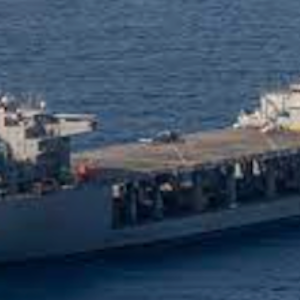
USS Lewis B Puller Weapons Interdiction
Date: January 11, 2024
With drones and helicopters overhead, U.S. Navy SEALs operating from the USS Lewis B Puller boarded a dhow off Somalia to conduct a flag verification. The SEALs team discovered medium range ballistic missile (MRBM) components, including guidance and propulsion systems and warheads, along with parts for anti-ship cruise missiles (ASCM), enroute to the Houthis.
Two of the operators were swept out to sea and, following search-and-rescue operations, declared dead. It was the first seizure of lethal Iran-supplied aid since the Houthis began attacking international shipping in early November 2023, according to CENTCOM.
-
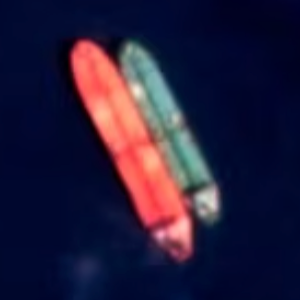
Suez Rajan Incident
Date: January 11, 2024
Iran’s regular Navy seized the Suez Rajan—the same vessel that the U.S. seized in April 2023—off the coast of Oman. Now named St. Nikolas, the Suez Rajan was taken at gunpoint by Iranian forces that illegally boarded the vessel. According to Iranian state media, Iran seized the vessel in retaliation for the U.S.’s confiscation of the vessels’ oil.
The operating company of the vessel, Empire Navigation, forfeited the Iranian oil on board the vessel in response to the U.S. Department of Justice’s (DOJ) criminal proceeding. DOJ noted that it was the first criminal resolution involving a company violating Iran oil sanctions, and the department specifically thanked UANI for its support. UANI had identified the illicit ship-to-ship transfer (STS) in February 2022 and alerted the relevant public authorities and service providers involved.
-
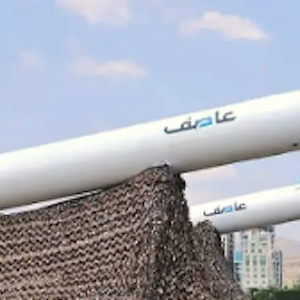
Drone and Missile Swarm Attack
Date: January 10, 2024
The Houthis launched one of its largest missile and drone configurations to date, targeting international shipping lanes where several merchant vessels were transiting. According to CENTCOM, the “complex attack” involved a barrage of 18 one-way attack drones, two anti-ship cruise missiles, and one anti-ship ballistic missile. No damage or injuries were reported.
-
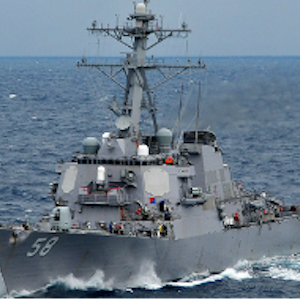
USS Laboon Incident
Date: December 26, 2023
During a 10-hour period on December 26, the USS Laboon and fighter jets from the Eisenhower Carrier Strike Group intercepted 12 drones, three anti-ship ballistic missiles, and two land attack cruise missiles fired from Yemen by the Houthis.
-
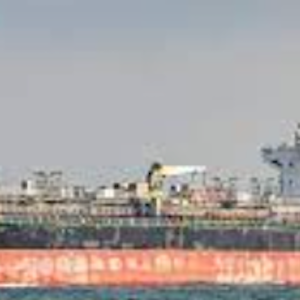
Chem Pluto Incident
Date: December 23, 2023
Two-hundred nautical miles from the coast of India and over 1,500 km from the launch point in Yemen, a chemical tanker came under drone attack in the Indian Ocean. The Chem Pluto, a Liberia-flagged, Japanese-owned, and Netherlands-operated vessel, was struck by the drone, which caused some damage.
-
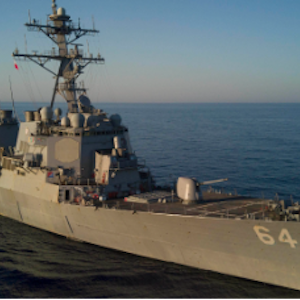
USS Carney Incident
Date: December 16, 2023
The USS Carney, a guided missile destroyer operating in Red Sea, intercepted at least 14 unmanned aerial systems launched in a swarm configuration. The drones—assessed to be one-way attack drones—did not cause damage or injuries, according to CENTCOM.
-
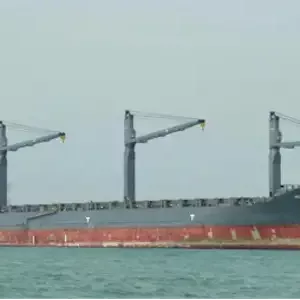
MSC Palatium III Incident
Date: December 15, 2023
The MSC Palatium III, a Liberia-flagged cargo vessel, was struck by one of two Houthi ballistic missiles launched at the vessel in the Red Sea near the Bab al-Mandeb Strait, causing a fire. It was the second Liberian-flagged vessel to be struck in the matter of hours. A U.S. defense official said that the Houthis were actually intending to target the same ship it had targeted earlier in the day, the Al Jasrah. Danish shipping company A.P. Moller-Maersk and others said that they would be halting shipments through the Red Sea as a result of escalating Houthi missile and drone attacks.
-
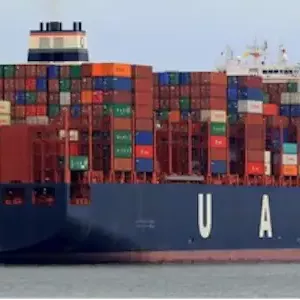
Al Jasrah Incident
Date: December 15, 2023
The Liberian-flagged, German-owned Al Jasrah was hit with a projectile, believed to be a drone, as it traversed the Red Sea near the Bab al-Mandeb Strait. The drone appears to have exploded on impact, causing a fire. This suggests it may have been Iran’s Shahed 136 series one-way attack drone. The British military’s United Kingdom Maritime Trade Operations reported that there were no injuries.
-
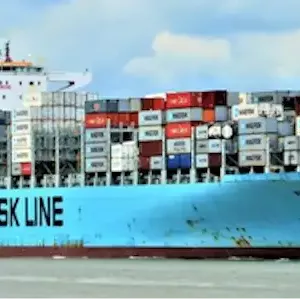
Maersk Gibraltar Incident
Date: December 14, 2023
A ballistic missile fired by the Houthis at a container ship traveling through the Bab al-Mandeb Strait missed its target. The Hong Kong-flagged Maersk Gibraltar was underway from Salalah, Oman to Jeddah, Saudi Arabia.
-
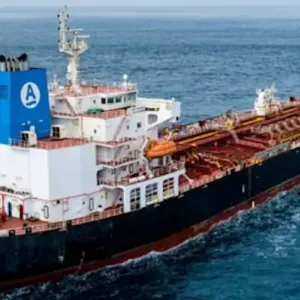
Ardmore Encounter Incident
Date: December 13, 2023
Houthi rebels assaulted the tanker Ardmore Encounter, as it traversed international waters near the Bab al-Mandeb Strait enroute to the Suez Canal. Two missiles were launched from Houthi-controlled areas in Yemen at the tanker, which was carrying highly explosive Indian-made jet fuel. Then, Houthi forces in speedboats pulled up alongside the vessel and attempted to board it, at which point armed guards on board opened fire and drove them off. No damage was reported, and no one was injured in the incident.
-

Strinda Incident
Date: December 11, 2023
Transiting the Red Sea 15 nautical miles west of the port of Mocha, Yemen, the Norwegian-owned oil tanker Strinda was enroute to Israel, when it came under Houthi missile fire. The land-based cruise missiles impacted the vessel, damaging it but not causing any casualties. Houthi spokesperson, Yehia Sarea, claimed that his group attacked the vessel because it was delivering oil to Israel.
-
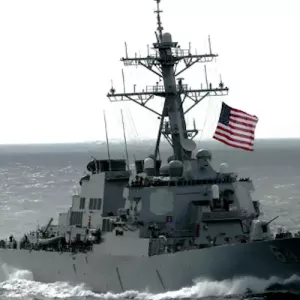
USS Carney Incident
Date: December 3, 2023
U.S. Central Command (CENTCOM) confirmed that the Houthis attacked the following three commercial vessels as they were transiting international waters in the southern Red Sea: Unity Explorer, Number 9, and Sophie II. Each of the vessels were struck by missiles. The USS Carney, a U.S. Navy destroyer, responded, and it too came under a drone attack. According to CENTCOM, the USS Carney engaged and shot down a drone headed towards it. The U.S. military said that Iran “fully enabled” the attacks.
-
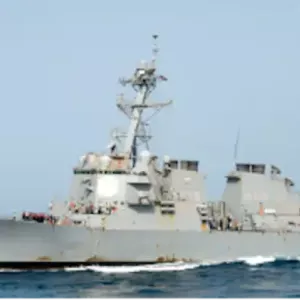
Central Park Incident
Date: November 27, 2023
The Houthis fired two ballistic missiles at the USS Mason, a U.S. Navy guided-missile destroyer, as it was responding to a distress call by an Israeli-linked commercial tanker, Central Park, operating in the Gulf of Aden. The USS Mason rerouted towards the Central Park, after armed Somali pirates boarded the vessel. The U.S. Navy destroyer, then, came under Houthi missile fire.
-
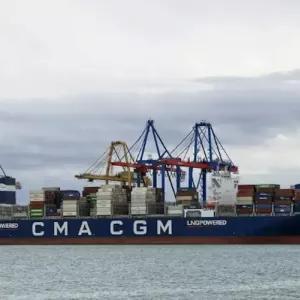
Mayet Incident
Date: November 25, 2023
An unmanned aerial vehicle (UAV), believed to be the Iran-made ‘kamikaze’ Shahed-136 drone, struck the Mayet, a Malta-flagged container ship managed by an Israeli company, operating in the northeastern Indian Ocean.
-
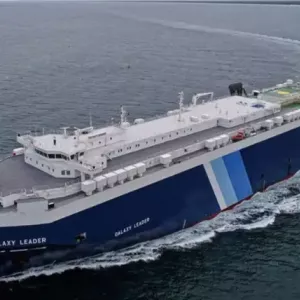
Galaxy Leader Hijacking
Date: November 20, 2023
Shipper: Ray Shipping Ltd.
Houthi rebels repelled down from a helicopter and hijacked Galaxy Leader, a Bahamas-flagged car carrier. According to Lloyd’s List, the Israeli-company Ray Shipping owns the vessel.
The Galaxy Leader, heading to India, was seized off the Yemeni port of Hodeida in the Red Sea. The Houthis then took the vessel and the 25 hostages on board into Yemeni waters. The Houthis claimed they targeted the Israeli-linked vessel and would continue to target others, because of Israel’s military operations in Gaza.
Iran attacked vessels owned by Ray Shipping on two occasions in 2021; once in April, when it fired missiles at the Hyperion; and once in February, when limpet mines detonated on the side of the MV Helios Ray.
-
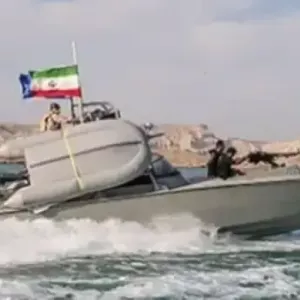
Oil Tanker Seizure
Date: July 6, 2023
Iran’s Islamic Revolutionary Guard Corps (IRGC) Navy seized a tanker that was said to be carrying smuggled fuel. Fars News agency, which is closely tied to the IRGC, claimed that the vessel was carrying 900 tons of smuggled fuel, and was seized under a court order. No further details were released.
-
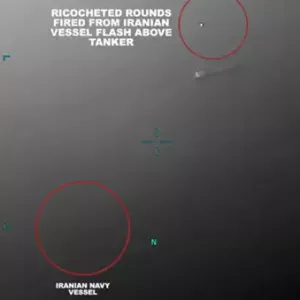
T.R.F. Moss and Richmond Voyager Incident
Date: July 5, 2023
The U.S. Navy deployed the U.S.S. McFaul, an MQ-9 Reaper drone, and a P-8 Poseidon patrol plane in response to an attempted Iranian seizure of the Marshall Island-flagged oil tanker, T.R.F. Moss, in the Gulf of Oman. The Islamic Republic of Iran Navy vessel, then, departed from the scene. Three hours later, another oil tanker, Richmond Voyager, came under attack in the Gulf of Oman. It was heading from Saudi Arabia, where it had made a port call, to Singapore. The Iranian vessel fired on the Richmond Voyager with small arms, but vacated the area after the U.S.S. McFaul arrived.
-
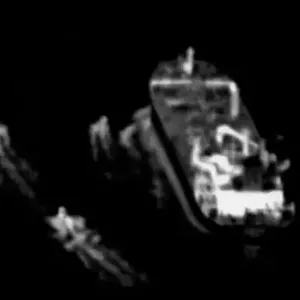
U.S.S. McFaul and H.M.S. Lancaster Incident
Date: June 4, 2023
The U.S. Navy's guided-missile destroyer U.S.S. McFaul and the British Royal Navy's frigate H.M.S. Lancaster responded to a merchant vessel’s distress call, after three Islamic Revolutionary Guard Corps’ Navy (IRGCN) fast-attack crafts (FACs), with armed personnel on board, swarmed it while transiting the narrow Strait of Hormuz, a strategic waterway at the mouth of the Persian Gulf. The Associated Press assessed the vessel to be the Marshall Islands-flagged bulk carrier, Venture. The Bahrain-based U.S. Navy’s 5th Fleet launched a P-8A maritime patrol aircraft, while the H.M.S Lancaster launched a helicopter, to surveil the scene. Approximately one hour after the U.S. and U.K. arrived on the scene, the FACs departed.
-
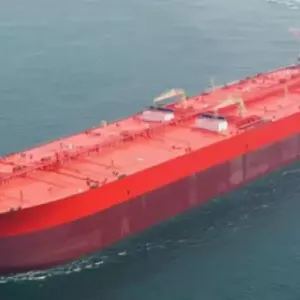
Niovi Incident
Date: May 3, 2023
The Islamic Revolutionary Guard Corps’ Navy (IRGCN) seized a Panama-flagged oil tanker, Niovi, while it was transiting the Strait of Hormuz en route to the port of Fujairah in the United Arab Emirates. Iranian fast-attack craft swarmed the vessel, and forced it to change course toward Iranian waters. Tehran’s prosecutor announced that the vessel was seized on a judicial order, but did not provide details.
-
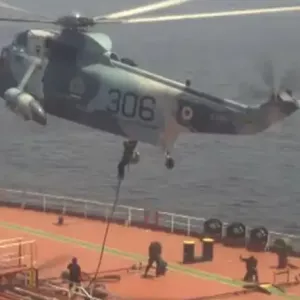
Advantage Sweet Incident
Date: April 27, 2023
Iranian navy commandos from the Islamic Republic of Iran Navy (IRIN) seized a Chinese-owned vessel, Advantage Sweet, in the Gulf of Oman en route to the U.S. The commandos boarded the vessel by helicopter. The Iranian army said that the vessel was seized because it had collided with an Iranian boat, but did not provide evidence.
-
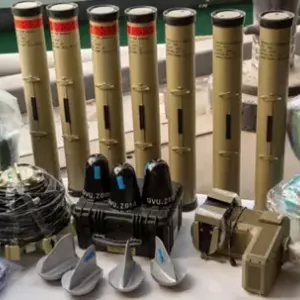
United Kingdom Weapons Interdiction
Date: February 23, 2023
Supported by the U.S. Navy, British Royal Navy frigate H.M.S. Lancaster intercepted a small boat that originated from Iran. The U.K. discovered and seized Iranian versions of Russian anti-tank guided missiles and missile components. The boat’s route has historically been used to smuggle weapons from Iran to the Houthis in Yemen.
-
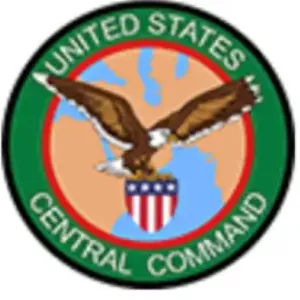
Drone Engines Interdiction
Date: February 1, 2023
U.S. Central Command reported that Yemeni security forces had seized 100 unmanned aerial vehicle (UAV) engines bound for the Houthi militants in Yemen, but did not specify when the incident had occurred.
-

H.M.S. Montrose Weapons Interdiction
Date: January 28, 2022
The British Royal Navy’s H.M.S. Montrose’s Wildcat helicopter identified a small vessel carrying suspicious cargo from Iran. The H.M.S. Montrose intercepted the vessel and seized unspecified illicit cargo.
-

French Warship Weapons Interdiction
Date: January 15, 2023
French special forces seized Iran-supplied weapons and ammunition in route to the Houthi rebels in Yemen. The forces discovered and seized over 3,000 assault rifles, half a million rounds of ammunition, and 20 anti-tank guided missiles after conducting the operation in coordination with the U.S. military in an effort to enforce a United Nations arms embargo on weapons transfers to the Houthis. The seizure was reported on February 1, 2023.
-
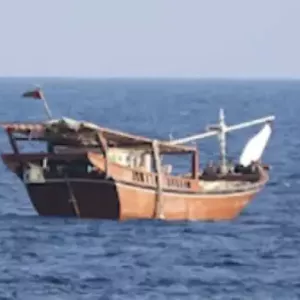
U.S.S. Chinook Weapons Interdiction
Date: January 6, 2023
A U.S. Navy boarding team intercepted a vessel on a route in the Gulf of Oman historically used to transport illicit cargo from Iran to Yemen, and discovered and seized 2,116 AK-47 assault rifles. The vessel was crewed by six Yemeni nationals. U.S. Navy Central Command noted in its press release that the shipment of weapons to the Houthis violates U.N. Security Council Resolution 2216 and international law.
-
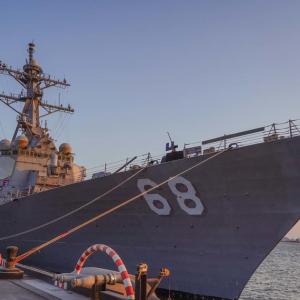
U.S.S. The Sullivans and U.S.S. Lewis B. Puller Incident
Date: December 6, 2022
An Islamic Revolutionary Guard Corps patrol boat passed dangerously close in front of U.S. Navy guided-missile destroyer U.S.S. The Sullivans and expeditionary sea base platform U.S.S. Lewis B. Puller in the Strait of Hormuz, shining a spotlight at the U.S. ships in an effort to blind them. To deescalate the situation, the U.S. ships sounded audible warnings and shined non-lethal lasers, then continued on their course without further incident.
-
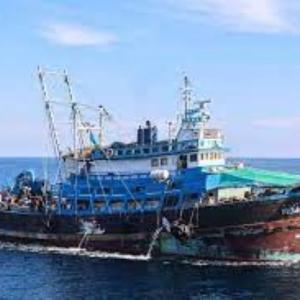
U.S.S. Lewis B. Puller Weapons Interdiction
Date: December 3, 2022
The U.S.S. Lewis B. Puller found over 1.1 million rounds of ammunition aboard a vessel in the Gulf of Oman on a maritime route from Iran to Yemen. The U.S. Navy also found fuses and propellants for rockets during the routine flag verification.
-
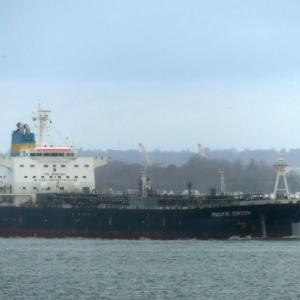
Pacific Zircon Tanker Incident
Date: November 22, 2022
The U.S. Navy’s Bahrain-based 5th Fleet published photos of an investigation of a drone attack on the Liberian-flagged Pacific Zircon, proving that the drone used was the Iran-made Shahed-136 drone, the same drone that Iran has been shipping to Russia for use in its war in Ukraine. The top U.S. Navy commander in the Middle East released a statement concluding that it was Iran that conducted the attack on the commercial vessel as it was traversing international waters.
-
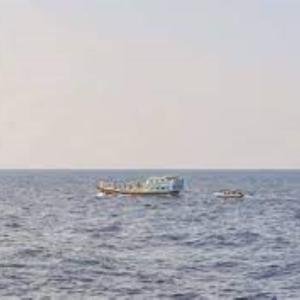
USCGC John Scheuerman and U.S.S. The Sullivans Weapons Interdiction
Date: November 8, 2022
The U.S. Navy’s 5th Fleet intercepted explosive materials in route from Iran to Yemen in the Gulf of Oman, including 70 tons of ammonium perchlorate, a powerful oxidizer commonly used to make rocket and missile fuel and explosives, and urea fertilizer. The transfer of weapons to the Houthis violates U.N. Security Council Resolution 2216 and international law. The U.S. Navy sank the vessel on November 13.
-
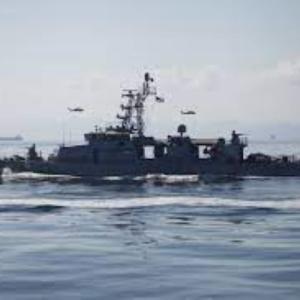
U.S.S. Sirocco and USNS Choctaw County Incident
Date: June 18, 2022
Three Islamic Revolutionary Guard Corps (IRGC) speed boats sped toward the Cyclone-class patrol ship U.S.S. Sirocco and the Spearhead-class expeditionary fast transport USNS Choctaw County in the strategic Strait of Hormuz. The IRGC actions violated international standards, “increasing the risk of miscalculation and collision,” said the Navy. In response to the provocation—the IRGC speedboats came within 50 yards of the U.S. vessels—the U.S.S. Sirocco fired its horns and a warning flare at the IRGC Boghammar, at which point it steered away from its path toward the U.S. Navy.
-
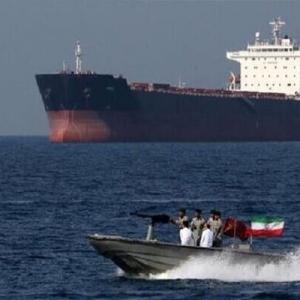
Hormozgan Province Incident
Date: May 30, 2022
The coastguard of Hormozgan province, Iran seized 106,500 liters of allegedly smuggled fuel from a ship in the Qeshm Island area. According to the chief justice of Hormozgan province, Mojtaba Ghahremani, the smugglers intended to ship the oil to a country in the Persian Gulf region. Nine of the ship’s crew and the ship itself were then handed over to Iran’s judiciary authorities, said Ghahremani. -
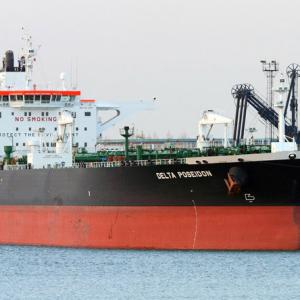
Greek Tankers Incident
Date: May 27, 2022
Shippers: Delta Tankers Ltd & Polembros Shipping Ltd
The Islamic Revolutionary Guards Corps Navy (IRGCN) seized two Greek tankers in the Persian Gulf in retaliation for a U.S. seizure of Iranian oil from the Iranian-flagged Pegas, which Greek authorities had first impounded off the Greek coast due to European Union (E.U.) sanctions. It was unclear whether Greece impounded the cargo because it was in violation of sanctions on Iranian oil or because of the tanker’s links to a sanctions-designated Russian bank, Promsvyazbank.One of the two seized Greek vessels, the Delta Poseidon, operated by Delta Tankers, was in international waters 22 nautical miles off the shore of Iran, when an Iranian naval helicopter landed on board the ship and took the crew hostage, according to Greece’s foreign ministry. The ministry added that a similar incident had occurred near Iran, but did not name the vessel.
-
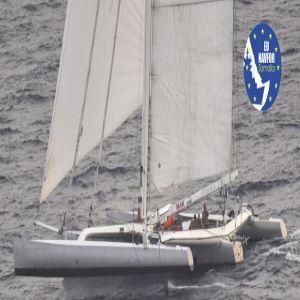
Lakota Incident
Date: May 19, 2022
Three boats, with rocket-propelled grenade launchers and assault rifles displayed, approached the Hong-Kong-flagged Lakota in the southern Red Sea close to the strategic Bab al-Mandeb Strait and fired 20 warning shots. One of the armed assailants boarded the sailing yacht. However, using evasive measures, the yacht was able to escape, and the crew was safe, reported the European Union (E.U.) Naval Force’s Operation Atalanta, which received the first report of the attack and dispatched the ITS Bergamini from its patrol near Djibouti to the site of the attempted hijacking.Dryad Global, a maritime security intelligence firm, stated that there was a realistic possibility that the Iranian-backed Houthis were responsible for the attack.
-
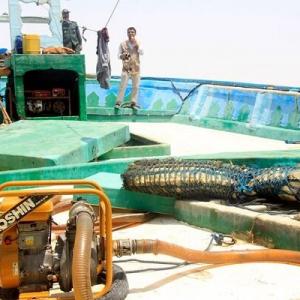
Iran Seizes Foreign Vessels
Date: May 18, 2022
Iran seized a foreign ship in the Persian Gulf which it alleged was attempting to smuggle 550,000 liters of fuel out of Iran. Several ships have been detained on similar allegations over the past couple months, including incidences on April 9, April 15, April 24, and May 14. -
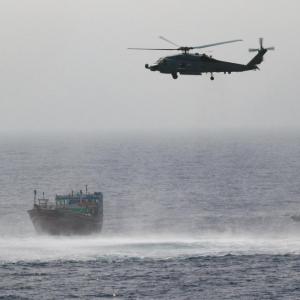
U.S.S. Momsen Drug Interdiction
Date: May 17, 2022
While carrying out a flag verification boarding in accordance with international law, a U.S. Coastguard Interdiction Team from the U.S.S. Momsen discovered and seized 640 kilograms of methamphetamine worth 39 million dollars in the Gulf of Oman, on a route historically used to smuggle weapons, narcotics, people, and goods. The U.S. Navy confiscated the fishing vessel and the drugs, which still remain in U.S. custody. The nine crew members of the vessel were identified as Iranian. -
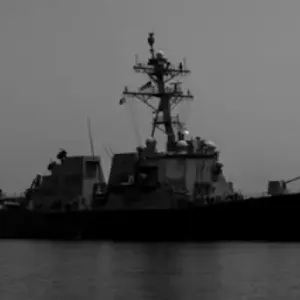
U.S. and U.K. Navies Weapons Interdiction
Date: February 25, 2022
Coordinated efforts between the U.S.S. Gridley and the British Royal Navy’s H.M.S. Montrose led to the seizure of surface-to-air missiles and cruise-missile rocket engines that originated from Iran. The U.S.S. Gridley deployed a MH-60 Seahawk helicopter to provide overwatch during the operation, while Royal Marines from the H.M.S. Montrose secured and searched the vessel. The U.K. reported in July 2022 that it had discovered multiple rocket engines for the Iranian-produced 351 land attack cruise missile and a batch of 358 surface-to-air missiles.
-
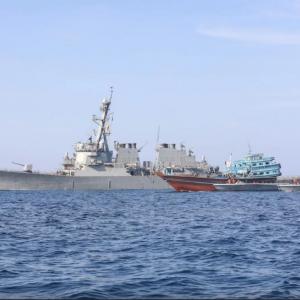
U.S.S. Cole Explosives Interdiction
Date: Janaury 18, 2022
The guided-missile destroyer U.S.S. Cole and patrol coastal ship U.S.S. Chinook interdicted the same stateless vessel transiting from Iran that the U.S.S. Winston Churchill had discovered was carrying weapons off the coast of Somalia in February 2021. This time the interdiction took place in international waters on a sea route historically used to transport weapons to the Houthis. During a flag verification boarding and subsequent search of the vessel, carried out in accordance with international law, U.S. forces discovered 40 tons of urea fertilizer, a chemical compound known to be used in explosives. -
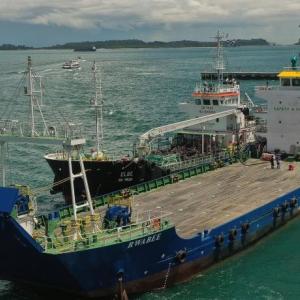
Rwabee Incident
Date: January 3, 2022
Shipper: Liwa Marine Services LLC
Armed men from Yemen’s Houthi movement seized the U.A.E.-flagged Rwabee, a civilian cargo vessel leased by a Saudi company, in the Red Sea, claiming that it was carrying “military supplies.” The Saudi-led coalition referred to the act as “piracy,” and the U.A.E. said that the vessel was carrying supplies for a field hospital.The Houthis aired footage on their Al Masirah television channel purportedly of the ship’s deck, which seemed to show military-style inflatable rafts, trucks, and other vehicles, as well as assault rifles. Saudi state television alleged that the Houthis transferred the weapons on board, while.
Just under two weeks later, the Iran-backed Houthi rebels rejected a U.N. request to release the Rwabee.
-
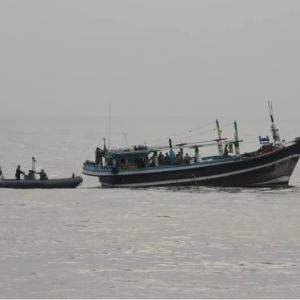
U.S.S. Tempest Drug Interdiction
Date: December 20, 2021
The U.S.S. Tempest and the U.S.S. Typhoon, operating in concert as part of an international naval task force, discovered, confiscated, and destroyed at sea approximately 850 pounds of heroin worth 4 million dollars, while conducting a routine flag verification of a stateless fishing vessel in the Arabian Sea in accordance with international law. The U.S. Coast Guard personnel that boarded the stateless vessel determined that each of its nine crew members were Iranian nationals. The U.S. Navy also believed that the vessel was made in Iran. -

Port of Latakia Incident
Date: December 28, 2021
The Syrian army alleged that Israel bombed a storage facility housing Iranian munitions that arrived at Syria’s Latakia port in November 2021. An Israeli defense official declined to claim responsibility for the strike, saying that Israel does not comment on “foreign reports.”A Syrian source familiar with Iranian weapons shipments to Syria told Reuters Iran had increased seaborne shipments to avoid intensifying Israeli drone strikes on ground convoys transiting the Syria-Iraq border.
-
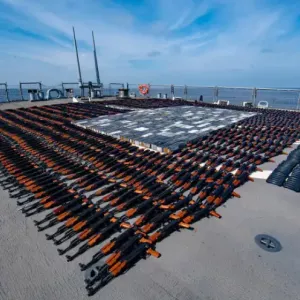
U.S.S. Tempest Weapons Interdiction
Date: December 23, 2021
Two U.S. Navy patrol coastal ships, the U.S.S. Tempest and the U.S.S. Typhoon, seized 1,400 Kalashnikov-style rifles and 226,600 rounds of ammunition from a stateless fishing vessel en route to Yemen from Iran, in the north of the Arabian sea. The U.S. Navy’s Bahrain-based 5th fleet issued a statement blaming Iran for the shipment, saying that the boat was sailing on a route “historically used to traffic weapons unlawfully to the Houthis in Yemen.”After the seizure of the weapons, the U.S. Navy sank the fishing vessel citing the “hazard” it posed to commercial shipping, and said the Yemeni crew would be repatriated.
-
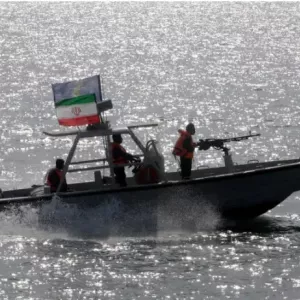
Iran Seizes Foreign Vessel
Date: November 20, 2021
Iran’s Islamic Revolutioanry Guard Corps (IRGC) seized a foreign ship in the Persian Gulf and detained its 11 crewmembers for allegedly smuggling 150,000 liters of diesel fuel. The IRGC did not release details on the vessel. -
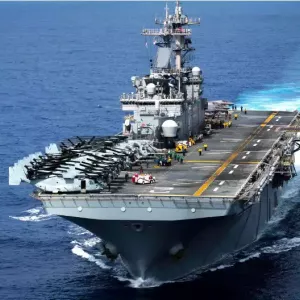
U.S.S. Essex Incident
Date: November 16, 2021
An Iranian naval helicopter came within 25 yards of the U.S.S. Essex and circled it in the Gulf of Oman. Pentagon spokesman John Kirby told reporters that the maneuver was “unsafe and unprofessional,” but it did not disrupt the ship’s transit or its operations. He added that such actions are dangerous because they can lead to miscalculations. -
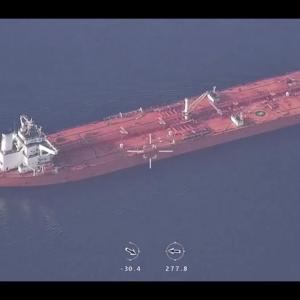
Sothys Incident
Date: November 3, 2021
Shipper: Opec Petrol Transportation Co
With air support, commandos from Iran’s Islamic Revolutionary Guard Corps (IRGC) boarded a Vietnamese-flagged oil tanker called Sothys on October 24, 2021, and took control of the ship at gunpoint, according to U.S. officials. Iran asserted that it was reclaiming oil the U.S. had “stolen” from another tanker.The U.S. denied the allegations, saying that its navy was present at the time of the Iranian attack to monitor the situation.
Sothys was suspected of shipping sanctioned Iranian oil. According to UANI’s analysis of ship tracking satellite imagery, Sothys received a ship-to-ship (STS) transfer of Iranian oil in June from an oil tanker called the Oman Pride.
Following an order from Iran’s judiciary, Sothys was released on November 10, 2021, after its oil was emptied at Bandar Abbas, Iran.
-

Nhava Sheva Port Incident
Date: October 11, 2021
India’s chief intelligence agency, the Directorate of Revenue Intelligence (DRI), seized 25 kg of heroin worth 17 million dollars from a container disguised as sesame seed and mustard oil that was imported to Navi Mumbai’s Nhava Sheva Port from Iran. The DRI detained a man named Jayesh Sanghvi after an investigation determined that he offered an importer 150 dollars per consignment imported by his company. Upon questioning, the importer, Sandeep Thakkar, admitted to giving his firm’s import-export code to Sanghvi, but he claimed not to know the shipment’s contents. -
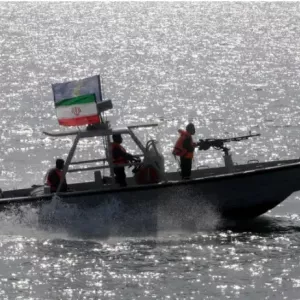
Iranian T.V. Claims That the IRGCN Intercepted a U.S. Vessel in the Gulf
Date: October 8, 2021
Iran’s state T.V. station aired footage of what appeared to be a U.S.-flagged vessel being chased by an Iranian speedboat, and claimed that the Islamic Revolutionary Guard Corps (IRGC) had intercepted the U.S. vessel in the Persian Gulf.A spokesman for the U.S. Navy’s Bahrain-based 5th fleet said he was not aware of any such incident, indicating that the Iranian reporting was likely false.
-
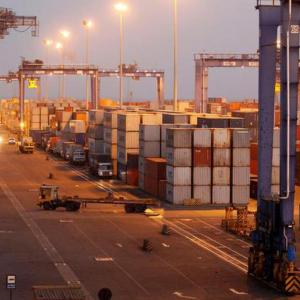
Mundra Port Incident
Date: September 19, 2021
India’s Directorate of Revenue Intelligence (DRI) seized just under 3,000 kg of heroin at Mundra port in Gujarat. The consignment, disguised as talc stones and imported by Aashi Trading Company, originated in Afghanistan and was shipped from Bandar Abbas port in Iran. -

Hezbollah Imports Iranian Oil
Date: September 16, 2021
In support of the U.S.- and E.U.-designated terrorist organization Hezbollah, Iran shipped millions of gallons of diesel fuel to Syria, destined for Lebanon. Given the fuel shortage in Lebanon (depicted to the left), the shipments serve as a propaganda win for Syria and Iran, and allow Hezbollah to further its role as a quasi-state entity. Hezbollah fosters a large Shia patronage network in Lebanon by providing goods and services that the government fails to provide. -
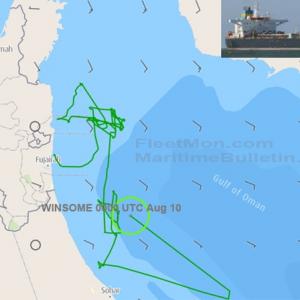
Winsome Incident
Date: August 10, 2021
Iran is suspected of hijacking a China-bound vessel, the Winsome, carrying 30 million dollars-worth of oil from Oman. The Winsome is owned by Lynx Marine and managed by Dubai-based ship manager Clara Shipping. The Indian Register of Shipping withdrew the ship’s classification in June 2021, and a replacement has yet to be named. -
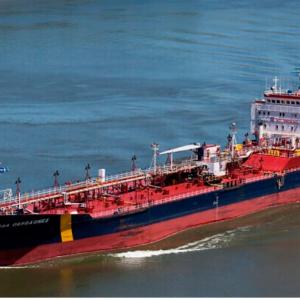
Asphalt Princess Incident
Date: August 4, 2021
Shipper: Glory International FZ-LLC
Iranian gunmen were suspected of hijacking the Asphalt Princess, a Panama-flagged oil tanker, in the mouth of the Strait of Hormuz, on its route to Oman. The tanker’s crew is said to have thwarted the attack by sabotaging the engines. The gunmen fled the ship once U.S. and Omani warships arrived at the scenes. Iran denied the allegations, calling them a pretext for “hostile action.” -
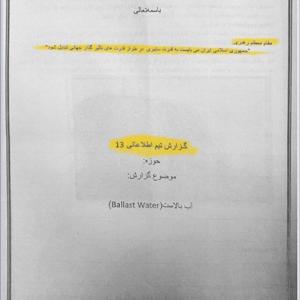
Iran Researches Cyberattacks on Sea-Faring Vessels
Date: August 4, 2021
A trove of Iranian reports by “Shahid Kaveh,” an offensive cyber unit within the Islamic Revolutionary Guard Corps (IRGC), revealed research on how to use cyberattacks to disrupt cargo vessels’ water filtration and ballast systems. The reports appear to be sponsored by the highest levels of the Iranian regime.The report uses diagrams (pictured to the left) to demonstrate the potential damage that can be inflicted on a vessel through cyberattacks. “Disorder within [ballast] systems can cause significant and irreparable damage to the vessel,” a caption to the diagram reads. It also identifies communication systems that are vulnerable to internet hacking.
-
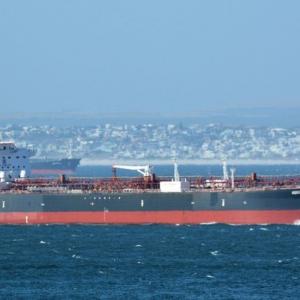
Mercer Street Incident
Date: July 29-30, 2021
Shipper: Zodiac Maritime Ltd
According to U.S. Central Command, on July 29, Liberian-flagged M/T MERCER STREET, operated by Zodiac Maritime Limited (chaired by an Israeli businessman), came under attack from two one-way UAVs while transiting in international waters off the coast of Oman. After the first attack failed, the crew was able to recover some UAV debris.On July 30, in a separate and deliberate attack, MERCER STREET was struck by another drone, killing the ship’s master (Romanian citizen) and a security officer (UK citizen).
A week after the attack, U.S. Central Command (CENTCOM) released a report on its investigation into the attack. The report concluded that “multiple components with very specific and matching identities to previously exploited (and known) Iranian one-way attack UAVs” were used in the Mercer Street incident.
-

Jawaharlal Nehru Port Incident
Date: July 6, 2021
India’s Directorate of Revenue Intelligence (DRI) confiscated 283 kg of heroin concealed in two containers with talc stones. The drugs originated in Afghanistan and were shipped from Iran. The DRI determined that the consignment was intended for Punjab, and arrested a supplier named Prabhjit Singh from Punjab along with two others associated with the case. -
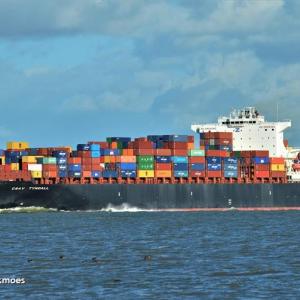
Date: July 3, 2021
Shipper: Zodiac Maritime Ltd
Sailing the Indian Ocean toward the Jebel Ali port in Dubai, United Arab Emirates (UAE), the Liberia-flagged CSAV Tyndall, previously owned by a prominent Israeli businessman with Zodiac Maritime, caught flames in an alleged Iranian attack. Israeli national security officials believed that the attack was carried out by an Iranian drone or naval commandos, and may have been retaliation for the targeting of an Iranian centrifuge production site. -
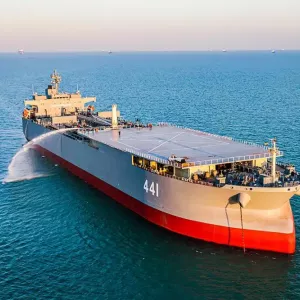
Sahand and Makran Incident
Date: June 17, 2021
In what some believe to be the result of U.S. diplomatic pressure applied on the government of Venezuela, Iranian navy ships—a destroyer known as the Sahand, and the intelligence-gathering support vessel known as the Makran—thought to be headed toward Caracas to engage in a weapons transfer, changed course and redirected up the western coast of Africa instead of crossing the Atlantic.Pentagon officials thought that the vessel, upon being turned back by the Maduro regime, was then heading to Syria or to participate in Russia’s Navy Day events so as to provide some justification for the ship’s departure from the Bandar Abbas port in Iran. The officials believed (and Maxar satellite imagery confirmed) that the Makran Iranian naval vessel was carrying seven fast attack craft and possibly other weapons.
-
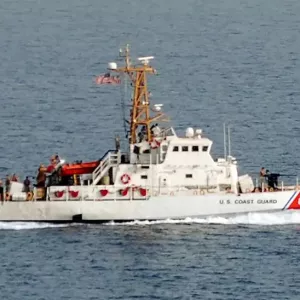
USCGC Maui Incident
Date: May 10, 2021
A group of 13 Islamic Revolutionary Guard Corps Navy (IRGCN) fast in-shore attack craft (FIAC) approached U.S. Navy ships, which, in accordance with international law, were escorting the submarine U.S.S. Georgia through the Strait of Hormuz. The speedboats, armed with machine guns, “conducted unsafe and unprofessional maneuvers, and failed to exercise due regard for the safety of U.S. forces,” said U.S. Central Command (CENTCOM).Two of the IRGCN FIAC, with weapons uncovered and manned, broke away from the group toward the opposite side of the U.S. formation. After many attempts to deescalate the situation by means of verbal warnings, acoustic devices, and the ship’s horn, failed, the USCGC Maui fired warning shots, and
-
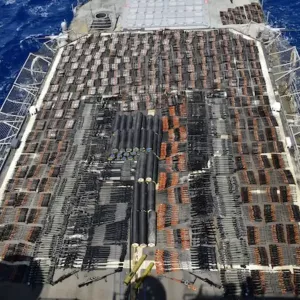
U.S.S. Monterey Interdiction
Date: May 8, 2021
Conducting a routine flag verification boarding in international waters in accordance with international law, the U.S. Coast Guard Advanced Interdiction Team (AIT) of the guided-missile cruiser U.S.S. Monterey discovered and seized a cache of weapons, including dozens of Russian-made anti-tank guided missiles, Chinese type-56 assault rifles, and hundreds of PKM machine guns, sniper rifles, and rocket-propelled grenades (RPGs), on board a Shu’ai dhow in the Arabian sea.The U.N. panel of experts on Yemen reported that a navigational device on board the Shu’ai dhow indicated that it had been near the Iranian port of Jask a few days before the interdiction.
-
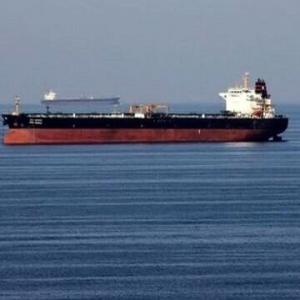
Iranian Weapons Smuggling
Date: April 27, 2021
In an effort to avoid Israeli airstrikes on land transport convoys, Iran moved some of its weapons smuggling operations to sea. Iran received protection from Russian vessels as it shipped weapons to Lebanon and Syria from the Red Sea, through the Suez Canal, and into the Mediterranean, according to Israeli Defense Forces. -
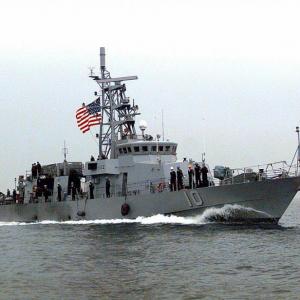
U.S.S. Firebolt Incident
Date: April 26, 2021
Islamic Revolutionary Guard Corps Navy (IRGCN) speedboats, armed with deck-mounted machine guns and rocket launchers, came within 62 meters of the U.S.S. Firebolt and a U.S. Coast Guard patrol boat on their patrol of the Persian Gulf. In response to the threat, the U.S.S. Firebolt issued multiple warnings via bridge-to-bridge radio and acoustic devices before firing warning shots, at which point the IRGCN boats dispersed. -
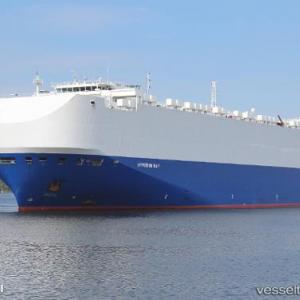
Hyperion Ray Incident
Date: April 14, 2021
Shipper: Ray Shipping Ltd
The Bahama-flagged vehicle carrier Hyperion Ray, owned by the Israeli Ray Shipping Company, came under an alleged Iranian attack. Missiles struck the Hyperion near the shores of the Fujairah emirate of the United Arab Emirates, its destination, causing “light damage” but no casualties. The attack occurred one day after Iran vowed revenge for an explosion at its Natanz nuclear facility that it blamed on Israel. -
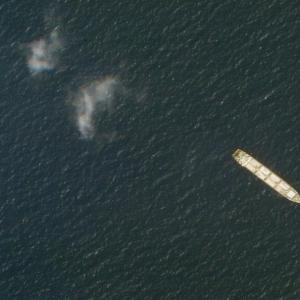
Saviz Incident
Date: April 7, 2021
Iran’s foreign ministry confirmed that an explosion damaged one of their vessels, the Saviz, anchored off Yemen’s Red Sea coast. A spokesperson for the ministry claimed that the vessel was anchored there to protect the area against piracy, however, U.S. officials and military experts had previously determined that the ship was masked as a cargo vessel, but in fact operated by Iran’s Islamic Revolutionary Guard Corps (IRGC) to collect intelligence and provide targeting information for Houthi anti-ship attacks.Israeli intelligence officials reportedly told the U.S. that Israel had carried out the mine attack in retaliation for Iranian attacks on Israeli vessels, but Israel did not publi
-
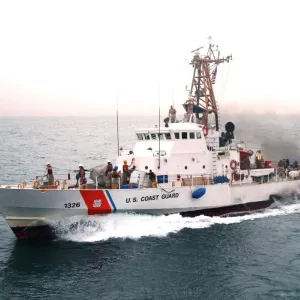
Monomoy and Wrangell Incident
Date: April 2, 2021
Upon announcing that it would negotiate with the U.S. to revive the 2015 nuclear deal, Iran sent speed boats from the Islamic Revolutionary Guard Corps Navy (IRGCN) to harass two U.S. Navy vessels: the Monomoy and the Wrangell. One of the Iranian ships, the Harth 55, crossed as close as 70 yards from the bow of the Wrangell, forcing it to maneuver to avoid a collision.Using bridge-to-bridge radio frequency, the U.S. crew warned the Iranian ships numerous times, but the “unsafe and unprofessional interaction” continued, said Commander Rebecca Rebarich, a spokeswoman for the U.S. Navy’s Bahrain-based 5th fleet. After three hours, the IRGCN ships dispersed.
-
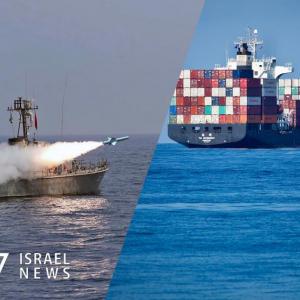
MT Lori Incident
Date: March 25, 2021
Shipper: MSC Mediterranean Shipping Co
A Liberia-flagged Israeli-owned cargo ship, the MT Lori, en route to India from Tanzania, came under missile fire in the Gulf of Oman. XT Shipping owned the vessel, which completed its journey to India. The attack may have been Iranian retaliation for an Israeli strike on an Iranian vessel days before. -
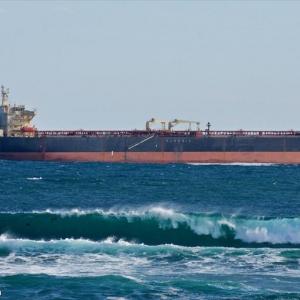
Iranian “Environmental Terrorism”
Date: March 3, 2021
Israeli Environmental Protection Minister Gila Gamliel said that her ministry conducted an investigation into an oil spill that coated the Israeli coastline with oil, and revealed that the ship responsible for the spill had called at an Iranian port before approaching the Israeli coast. The investigation found evidence that the spill was deliberate.The ship, identified as the Libyan-owned, Panama-flagged Emerald, engaged in suspicious behavior before the spill, such as turning on and off its tracking signal while making its way through the Suez Canal.
-
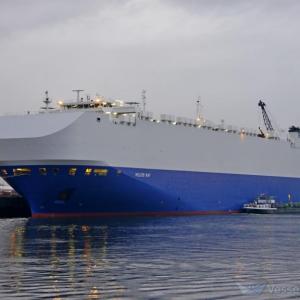
Helios Ray Incident
Date: February 26, 2021
Shipper: Ray Shipping LtdExplosions, thought to be caused by limpet mines, ripped holes in both sides of the Israeli-owned vehicle carrier, the MV Helios Ray, just above the waterline in the Gulf of Oman, on its route from Saudi Arabia to Singapore. Iran denied Israeli allegations at the U.N.; however, a hardline Iranian media outlet, Kayhan, confirmed that Iran had attacked the ship, claiming the cargo vessel was a “military ship belonging to the Israeli army,” and thus a “legitimate target.
-
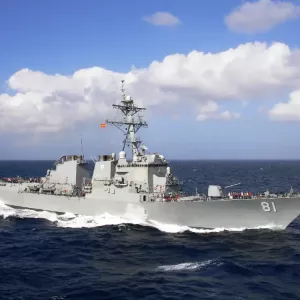
U.S.S. Winston Churchill Interdiction
Date: February 10, 2021
70 nautical miles east of the coast of Somalia, the U.S.S. Winston Churchill intercepted a suspected weapons transfer (pictured to the left) between two small dhows. The Shu’ai dhow was not carrying any cargo and was released after being interdicted, but the second vessel, a Jelbut dhow, was carrying 3,752 Type 56-1 assault rifles, 198 PKM-pattern general-purpose machine guns, components for 82 DShK heavy machine guns, 50 AM-50 Sayyad rifles, and 90 rocket propelled grenade (RPG)-7 launchers, according to the U.N. panel of experts on Yemen.Navigational devices on board the Jelbut dhow confirmed information from an unspecified U.N. member state that the crew received the weapons at the Jask port in the Islamic Republic of Iran. Iran denied any links to the seized arms.
-
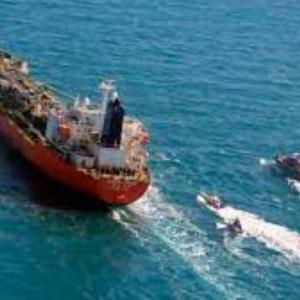
MT Hankuk Chemi Incident
Date: January 5, 2021
Shipper: Taikun Shipping Co Ltd
Iran’s Islamic Revolutionary Guard Guards Corps (IRGC) seized a South Korean-flagged chemical tanker, the MT Hankuk Chemi, in the Strait of Hormuz, detained its crew, and demanded the release of 7 billion dollars of Iranian funds in South Korean banks frozen because of U.S. sanctions. In April 2021, 4 months after Iran seized the ship, Iran freed it after South Korea promised to try to secure the release of the frozen funds. -
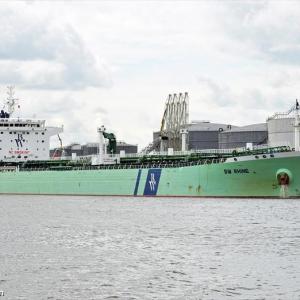
BW Rhine Incident
Date: December 14, 2020
Shipper: Hafina Pools Pte Ltd
An explosive-laden boat struck the Singapore-flagged BW Rhine as it was discharging oil at Saudi Arabia’s Jeddah port, causing a fire that the 20-member crew extinguished. The Iranian-backed Houthi rebels in Yemen did not claim responsibility for the attack, but the Saudi-led military coalition blamed them for the attack. -
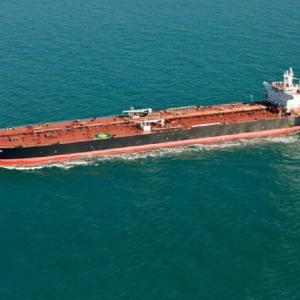
MT Agrari Incident
Date: November 25, 2020
Shipper: TMS Tankers Ltd
The Maltese-flagged, Greek-operated MT Agrari struck a mine, which exploded and damaged the oil tanker, in the Red Sea, near Shuqaiq, Saudi Arabia. Agrari’s operator, TMS Tankers Ltd., reported that no one on board was injured.The Iranian-backed Houthis did not respond to a request for comment, but they are thought to be responsible for laying the mines in an effort to target Saudi Arabia. A few days prior, the Saudi coalition reported that it had destroyed five Iranian-made mines in the Bab al-Mandeb Strait, 363 miles south of Shuqaiq.
-

Iran Seizes Panama-Flagged Vessel
Date: November 20, 2020
Iran seized a Panama-flagged vessel allegedly smuggling 300,000 liters of fuel and detained the ship’s 10 crewmembers. Iran’s semi-official news agency, Fars, broke the story but did not provide details on the vessel. -
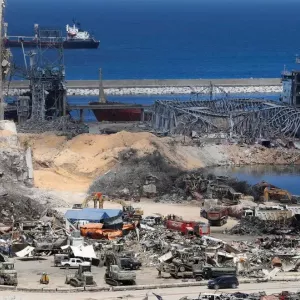
Iran Supplied Ammonium Nitrate to Hezbollah Through Beirut Port: Report
Date: August 20, 2020
A German newspaper, Die Welt, cited western security officials as confirming the Islamic Revolutionary Guards Corps’ Quds Force (IRGC-QF) sold 670 tons of ammonium nitrate to Hezbollah for 72,000 dollars in 2013 and shipped it to the Beirut port. In August 2020, the same explosive material ignited at the Beirut port, devastating the city and killing over 150 people. -

U.A.E.-Flagged Vessel Incident
Date: August 20, 2020
Iran seized a U.A.E.-flagged ship allegedly violating its territorial waters after U.A.E. coast guards killed two Iranian fishermen and seized their ship, according to Iran’s Foreign Ministry. Iran summoned the U.A.E. charge d’affaires in Tehran to demand the release of the detained boat and the surviving fishermen. Iran’s foreign ministry then released a statement saying that the Iranian boat and its crew had been released. -
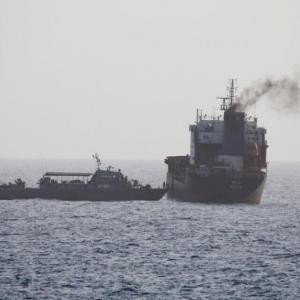
MT Wila Incident
Date: August 12, 2020
Shipper: IMS SA
In a blatant violation of international law, an Iranian Navy Sea King helicopter hovered over the Liberia-flagged MT Wila, an oil tanker, and armed Iranian forces slid down ropes onto the vessel in the Strait of Hormuz. A Liberian firm named Bandit Shipping Co. owned the vessel at the time of this incident.Coalition Task Force (CTF)—an operational arm of a consortium of countries, including the U.S. and the U.K, known as the International Maritime Security Construct (IMSC), whose aim is to maintain maritime security in the Persian Gulf, Gulf of Oman, Gulf of Aden, and Red Sea—dispatched a ship to monitor the situation.
A U.S. military official said that Iranian forces held the tanker for five hours before releasing it.
-

Then-Secretary of State Calls on U.N. Security Council to Extend Arms Embargo on Iran
Date: July 8, 2020
Then-Secretary of State Mike Pompeo revealed that the U.S. Navy interdicted a weapons shipment destined for the Houthis in Yemen. He explained before the U.N. Security Council that 200 rocket-propelled grenades, 1,700 assault rifles, 21 surface-to-air and land attack missiles, several anti-tank missiles and other advanced weaponry were found in violation of the U.N. Arms Embargo, which was set to expire in October 2020 under the terms of the 2015 Iran nuclear deal known as the JCPOA. Russia and China, which both have veto power over U.N. Security Council resolutions, signaled their opposition to the extension of the arms embargo -
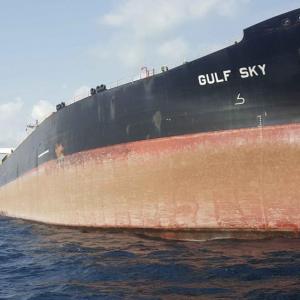
MT Gulf Sky Incident
Date: July 5, 2020
The Dominica-flagged MT Gulf Sky, an oil tanker sought by the U.S. for circumventing U.S. sanctions, was hijacked off the coast of the U.A.E. Satellite photos later revealed that the vessel was positioned in Iranian waters, near the port city of Bandar Abbas.In May, the U.S. Justice Department filed criminal charges against two Iranians for trying to launder 12 million dollars through a series of front companies to purchase the vessel, then named MT Nautica. Soon thereafter the vessel took on Iranian oil at Kharg Island to sell abroad.
Court documents alleged that the Islamic Revolutionary Guard Corps (IRGC) Quds Force, the National Iranian Oil Company (NIOC), and the National Iranian Tanker Company (NITC) were involved in the money laundering scheme.
-

Top Iranian Military Official Threatens U.S. Navy
Date: April 23, 2020
Major General Hossein Salami, head of Iran’s Islamic Revolutionary Guard Corps (IRGC), said that Iran would destroy American warships if they threaten Iranian vessels in the Persian Gulf -
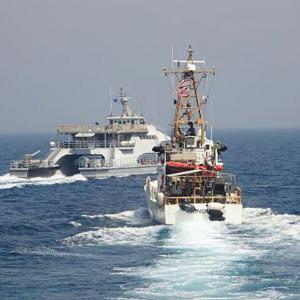
U.S. Navy Ships Encounter the IRGCN
Date: April 15, 2020
Eleven Islamic Revolutionary Guard Corps Navy (IRGCN) vessels circled six U.S. Navy vessels conducting training operations in international waters. The U.S. crews issued multiple warnings via radio, horns, and long-range acoustic noise-making devices. After one hour, the IRGCN vessels dispersed. Then U.S. Secretary of State Mike Pompeo explained that these provocative and unprofessional maneuvers constituted a “violation of international law.” -
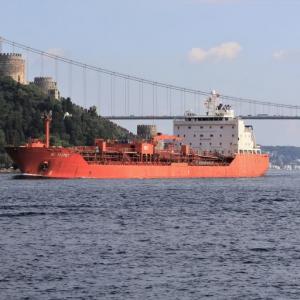
SC Taipei Incident
Date: April 14, 2020
Shipper: SC Shipping Singapore Pte Ltd
Armed Iranian authorities boarded a Hong Kong-flagged vessel, the SC Taipei, in international waters and redirected it into Iranian waters. The incident took place near the Strait of Hormuz, through which over a third of the world’s seaborne oil passes. Iranian authorities inspected the vessel on suspicion that it was going to load smuggled products and then released it -
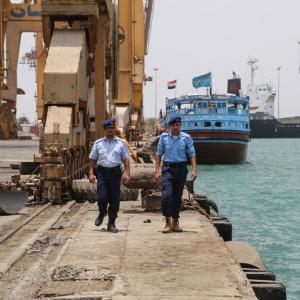
Port of Hodeidah Weapons Smuggling
Date: February 21, 2020
The IRGC smuggled weapons used by Houthi militias in Yemen to attack Saudi Arabia through the strategic port of Hodeidah, said recent intelligence. The increasingly sophisticated weapons included ballistic missiles, drones and booby-trapped vessels, according to Arab Coalition spokesperson Colonel Turki al-Maliki. -
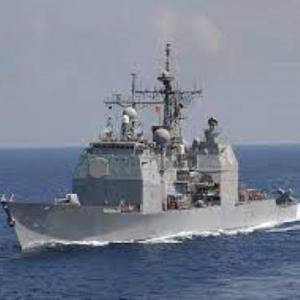
U.S.S. Normandy Interdiction
Date: February 9, 2020
A team from the U.S.S. Normandy discovered a cache of advanced Iranian-made weapons (150 anti-tank guided missiles and three 358 surface-to-air missiles) and weapons components (thermal rifles scopes) aboard a stateless dhow in the Arabian sea. The U.S. Navy vessel was conducting routine maritime security operations when it came across the ship, said U.S. Central Command (CENTCOM), which added that the interdiction fits “a consistent historical pattern of vessels being used to transfer weapons to the Houthis in Yemen” in violation of a U.N. weapons ban on the Houthis. -
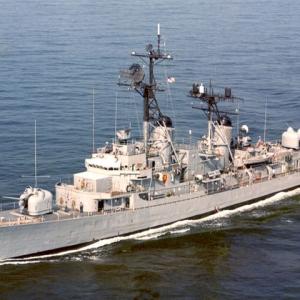
U.S.S. Forrest Sherman Interdiction
Date: November 25, 2019
A team from the U.S.S. Forest Sherman boarded a dhow (pictured to the left) in the Arabian Sea assessed to be en route to Yemen, and discovered 21 anti-tank guided missiles, five Iranian-made 358 surface-to-air missiles, thermal scopes, 13,000 blasting caps, and components for a 351 land attack cruise missile. After inspection of the seized weapons and components, it was determined that they were Iranian-made. -
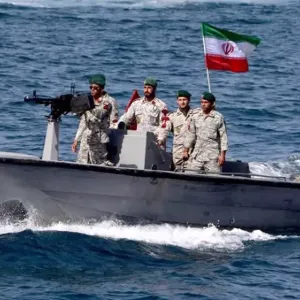
Iran Seizes Foreign Vessels
Date: September 16, 2019
The Islamic Revolutionary Guard Corps (IRGC) took control of an unnamed vessel in the Strait of Hormuz, allegedly smuggling 66,000 gallons of diesel fuel on its way to the United Arab Emirates (U.A.E.). The vessel was impounded near Iran’s Greater Tunb island in the Persian Gulf, and the crew was handed over to Hormozgan authorities. The seizure took place a few days after a major attack on a Saudi oil installation, for which the U.S. blamed Iran, and the Houthis claimed responsibility.Claiming to repossess smuggled oil, Iran seized foreign vessels on July 18, August 4, September 7, and December 30.
-
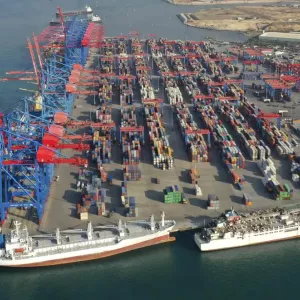
Weapons Shipments via Beirut Port
Date: July 23, 2019
At a U.N. Security Council briefing, Israel claimed that Iran’s Islamic Revolution Guard Corps’ Quds Force had been using civilian firms and maritime channels to supply weapons to Hezbollah via Beirut’s seaport for the past year.Israel’s U.N. ambassador Danny Danon – who made the claim – did not detail the types of weapons Iran smuggled through Beirut’s seaport, or the names of the companies involved. Hezbollah Secretary-General Hassan Nasrallah denied Israel’s claims.
-

Stena Impero Incident
Date: July 19, 2019
Shipper: Stena Bulk AB
Iran captured two tankers in the Strait of Hormuz, said U.S. officials. The Islamic Revolutionary Guard Corps (IRGC) claimed that it had seized a British-flagged oil tanker, Stena Impero, because it was violating “international regulations,” but denied seizing the Mesdar, a Liberian-flagged tanker that the U.S. alleged was also seized.Stena Impero, owned by the Swedish company, Stena Bulk, could have been seized in retaliation for action taken against an Iranian tanker by the U.K. Royal Marines weeks before, though Tehran denied such allegation. The ship was released in September 2019 from the Iranian Bandar Abbas port.
-
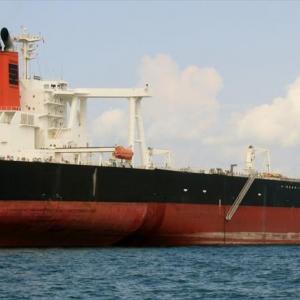
Mesdar Incident
Date: July 19, 2019
Shipper: Sonatrach Petroleum Corp
The Iranians denied seizing the Liberian-flagged Mesdar, an oil tanker owned by a U.K.-based company, in the Strait of Hormuz, weeks after an Iranian official vowed retaliation for the British navy’s seizure of an Iranian tanker in Gibraltar for violating E.U. sanctions. The Iranians claimed that the Mesdar was merely stopped and warned of “safety and environmental issues.” The Mesdar was then allowed to continue on its journey. -
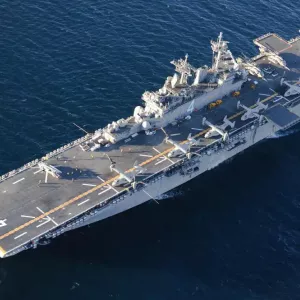
U.S.S. Boxer Incident
Date: July 18, 2019
In an act of self-defense, the U.S. Navy downed an Iranian drone in the Strait of Hormuz, said former President Donald Trump. The unmanned aerial vehicle (UAV) came within 1,000 yards of the U.S.S. Boxer, a distance which Pentagon spokesman Jonathan Hoffman referred to as a “threatening range.” This incident took place just under a month after Iran shot down a U.S. surveillance drone which it claimed was flying in its airspace. Iran denied Trump’s assertion, and released video footage purportedly showing the drone in flight after it was allegedly shot down. -
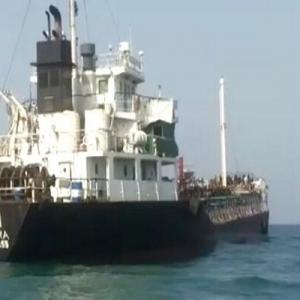
Riah Incident
Date July 13, 2019
Shipper: Mouj Al Bahar General Trading
U.S. officials suspect Iran seized the Panama-flagged Riah, an oil tanker that disappeared near Iranian waters after its transponder was switched off. The ship’s last known location was the Qashm Islands, where the Islamic Revolutionary Guard Corps (IRGC) has a navy base.The Supreme Leader of Iran Ali Khamenei’s statement that Iran would retaliate for a British seizure of an Iranian supertanker in Gibraltar earlier in July added to the suspicion. British authorities seized the tanker, Grace 1, on the assumption it was transporting oil to the Assad regime in Syria in contravention of E.U. sanctions.
On July 18, Iranian state television quoted an IRGC official saying that the paramilitary had seized a tanker earlier in the month on grounds that it was smuggling Iranian fuel, though he did not identify the ship. A semi-official Iranian news agency later quoted a defense official saying that it was the Riah that was towed for repairs in Iran; and on July 27, Iran released nine of the twelve Indian crew members that were detained.
-

British Heritage Incident
Date: July 11, 2019
Shipper: BP Shipping Ltd
Armed boats of the Islamic Revolutionary Guard Corps Navy (IRGCN) approached the BP-owned British Heritage oil tanker in the Strait of Hormuz and ordered it into Iranian waters, but they were deterred by a British Royal Navy frigate, the HMS Montrose, which was escorting the tanker. The HMS Montrose pointed its guns at the IRGCN boats and warned them over radio, at which point they dispersed. A U.S. Navy aircraft carrier filmed the incident, but the IRGCN denied that it occurred. Iran’s then foreign minister, Mohammad Zarif, dismissed the situation as “worthless” and intended to “create tension.” -
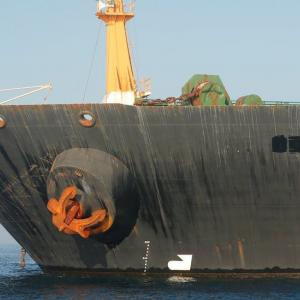
Gibraltar Incident
Date: July 5, 2019
British Royal Marines impounded an Iranian supertanker – Grace 1 – off the coast of Gibraltar, suspecting it was attempting to smuggle two million barrels of Iranian oil to Syria’s Assad regime, in violation of EU sanctions on Damascus. The ship – which was renamed Adrian Darya-1 – was eventually released, and appears to have continued on to deliver its cargo to Syria, despite Iran promising not to do so as a precondition for the vessel’s release. -
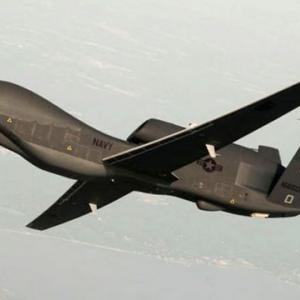
Strait of Hormuz U.S. Drone Incident
Date: June 20, 2019
Iran shot down a U.S. military drone flying in international airspace over the Strait of Hormuz, according to U.S. officials. The U.S. pointed to a different set of coordinates as to the location of the drone when it was shot down than Iran, which said “the intruding American spy drone” had entered Iranian territory.Iran’s Tasnim news agency said that the drone was shot down by a Khordad-3 medium-range air defense missile.
-
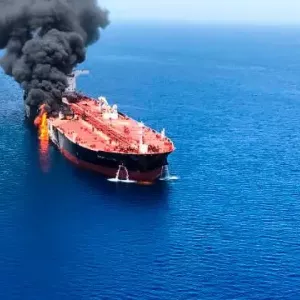
Gulf of Oman Incident
Date: June 13, 2019
Shippers: Kokuka Sangyo Co Ltd and Frontline Ltd
U.S. Intelligence officials determined that Iran was responsible for explosions that severely damaged two oil tankers in the Gulf of Oman – the Kokuka Courageous and the Front Altair – based on evidence of the weapons used, expertise and resources required, and similarity to other Iranian attacks on shipping vessels.U.S. Central Command (CENTCOM) released a video showing an IRGC patrol ship pulling up alongside one of the damaged vessels after the explosions to remove unexploded limpet mines, presumably to cover up their involvement in the attack.
-
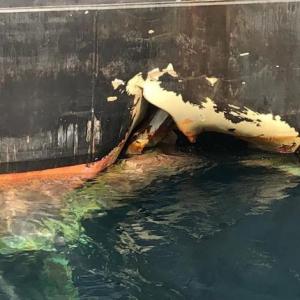
Fujairah Incident
Date: May 12, 2019
Shipper: Bahri
Iran was suspected of sabotaging four commercial vessels outside the Strait of Hormuz. The U.A.E. identified the ships as two crude oil tankers owned by the Saudi shipping firm Bahri; a UAE-flagged fuel bunker barge; and a Norwegian-registered and owned oil tanker. An Iranian lawmaker blamed “saboteurs from a third country,” while a U.S. official familiar with U.S. intelligence said that the attacks “fit [Iranian] M.O. [modus operandi].”Former U.S. National Security Advisor and current UANI advisor John Bolton said that the attacks were “almost certainly” carried out by Iran. The attacks were thought to be Iranian retaliation for the U.S.’s decision in 2019 to end the waiver program that allowed some countries to import limited quantities of Iranian oil without facing U.S. sanctions.
-
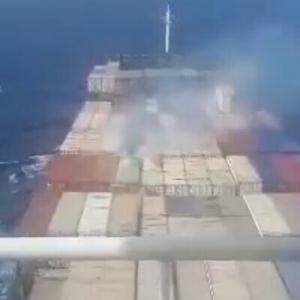
Shahr E Kord Incident
Date: April 28, 2019
UN-backed Libyan Government of National Accord (GNA) officials seized an Iranian ship – sanctioned by the U.S. and E.U. – off the coast of Misrata in western Libya.A spokesman for the Libyan National Army, opposed to the GNA, claimed the ship was carrying 144 containers of weapons destined for “terrorists.” The ship departed from Bulgaria the prior week, with Misrata as its final destination.
The Shahr E Kord is owned by Iran’s Islamic Revolution Guard Corps (IRGC).
-
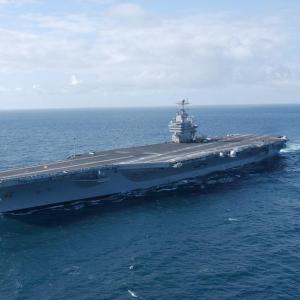
U.S.S. John C. Stennis Incident
Date: December 21, 2018
Thirty Islamic Revolutionary Guard Corps (IRGC) vessels shadowed the U.S. aircraft carrier U.S.S. John C. Stennis and its strike group in the Strait of Hormuz, at one point launching rockets away from the aircraft carrier and flying a drone nearby.The U.S. aircraft carrier was abiding by international law, as the Strait of Hormuz is viewed as an international transit route, despite the fact that it is within the territorial waters of Iran and Oman. Iran on multiple occasions has threatened to shut down this narrow passageway, through which over a third of seaborne oil flows.
-
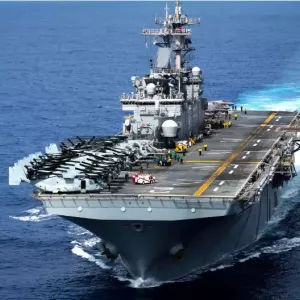
U.S.S. Essex Incident
Date: October 26, 2018
Six boats under the command of the Islamic Revolutionary Guard Corps (IRGC) trailed the U.S.S. Essex in the Persian Gulf, two of which came within 300 yards of the American warship.General Joseph Votel, who was on the U.S. vessel at the time of the incident, said to reporters that the Iranian maneuvers were commonplace and did not rise to the level of “unsafe and unprofessional” activity. Nevertheless, the Iranians appeared to photograph the U.S.S. Essex, and a U.S. official aboard the ship said that Iranian personnel had threatened to shoot down a naval helicopter flying off the U.S.S. Essex.
-
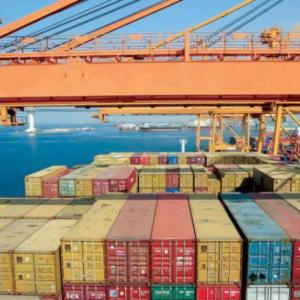
Jizan Port Incident
Date: September 30, 2018
Claiming retaliation for Saudi airstrikes in Yemen, the Iranian-backed Houthi rebels launched an explosives-laden remote-controlled boat at the Saudi Jizan port. The Royal Saudi Navy detected, intercepted, and destroyed the boats, which caused only minimal damage, said Saudi coalition spokesman Colonel Turki al-Maliki. -
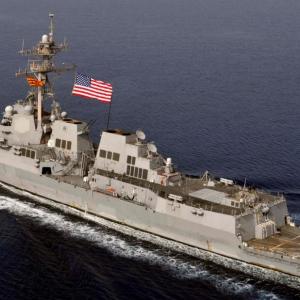
U.S.S. Jason Dunham Incident
Date: August 27, 2018
The U.S.S. Jason Dunham intercepted two ships smuggling weapons in the Gulf of Aden, off the coast of Somalia. The next morning, a security team from the Dunham boarded one of the ships – which was not registered to any nation – and found a weapons cache of hundreds of green plastic bags, each containing 3-4 brand new Ak-47 rifles. In all, it seized 2,521 Ak47s.The U.S. and United Nations suspected that Iran was behind the weapons shipment, which originated in Somalia, and the rifles were intended for Houthi rebels in Yemen.
-
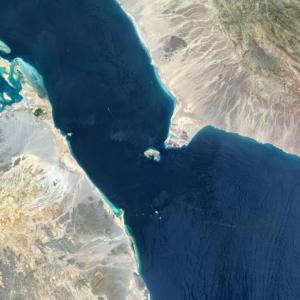
The Bab el-Mandeb Strait Incident
Date: July 26, 2018
Houthi rebels attacked two unnamed Saudi oil tankers in the Red Sea. In response, Saudi Arabia temporarily halted all oil shipments through the strategic Bab el-Mandeb Strait, said Saudi Arabia’s energy minister, causing global oil prices to increase by 0.6 percent. -
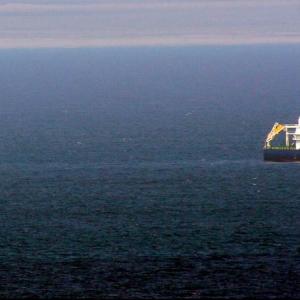
Houthi Missile Attack on Saudi Tanker
Date: April 3, 2018
In retaliation for Saudi airstrikes in Yemen, Iran-backed Houthi rebels carried out a missile strike on an unnamed Saudi oil tanker west of Yemen’s Hodeidah port. A Saudi coalition spokesman did not disclose precisely the extent of the damage, but said that the vessel continued its course northward, escorted by a Saudi coalition warship -
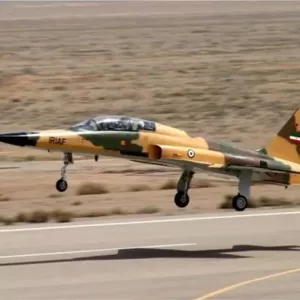
Iranian Warplane Incident
Date: January 22, 2018
Iranian Rear Admiral Mahmoud Mousavi claimed that Iranian warplanes had deterred “coalition vessels” that were allegedly encroaching on Iranian training exercises in the Persian Gulf to monitor the activity. He said that an Iranian drone identified the vessels approaching the Iranian ships before Iranian planes were ordered to fly over. It was unclear whether the incident had actually happened. -
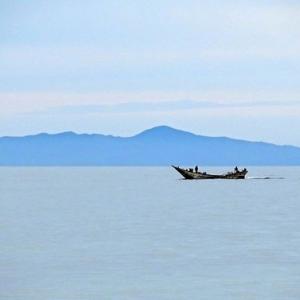
Red Sea Incident
Date: January 10, 2018
The Saudi Arabia-led coalition fighting in Yemen reportedly destroyed a Houthi explosives-laden boat headed toward a Saudi oil tanker in the Red Sea near the port of Hodeidah. -
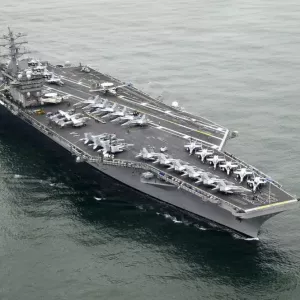
U.S.S. Nimitz Drone Incident
Date: August 14, 2017
Flying without navigational lights on in violation of international mandates, an Iranian QOM-1 drone closed in on a U.S. aircraft carrier, the U.S.S. Nimitz, in the central Persian Gulf, according to the U.S. Navy. The drone’s behavior was “unsafe and unprofessional” not only because it did not have its lights on, but because it came within 1,000 feet of the U.S. carrier. -
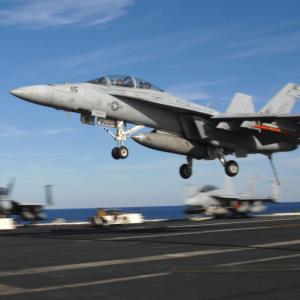
U.S. Super Hornet Incident
Date: August 8, 2017
Despite repeated warnings via radio call to stay clear of the F/A 18-E fighter jet, which is assigned to the U.S.S. Nimitz aircraft carrier, an Iranian QOM-1 drone flew in close proximity to it while it was preparing to land after conducting flight operations in airspace above the central Arabian Gulf. As a result of the “unsafe and unprofessional actions,” which constituted a violation of international maritime laws and customs, the F/A 18-E had to swerve out of the way to avoid a collision, said a statement by U.S. Central Command (CENTCOM). -
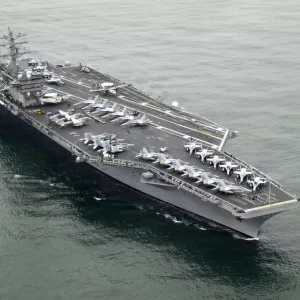
U.S.S. Nimitz Helicopter Incident
Date: July 29, 2017
A U.S. helicopter attached to the U.S.S. Nimitz identified several rocket-bearing Iranian vessels approaching a formation of U.S. ships at a high rate of speed. In response to the threat, the helicopter fired warning flares at the Islamic Revolutionary Guard Corps Navy (IRGCN) vessels in what the U.S. Navy described as a “safe and professional” reaction. The vessels then halted their movement toward the U.S. aircraft carrier and dispersed.Following the incident, the IRGC issued a statement referring to the flare as “provocative and unprofessional,” and denied that its ships were approaching the U.S. Navy vessel.
-
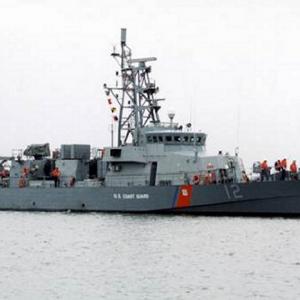
U.S.S. Thunderbolt Incident
Date: July 25, 2017
The U.S.S. Thunderbolt was engaged in coalition exercises when an Iranian ship came within 150 yards of it in what the U.S. Navy referred to as an “unsafe and unprofessional interaction.” The Islamic Revolutionary Guard Corps claimed that the U.S. vessel moved toward its ships to “instigate and frighten its crew.” During the interaction, the Thunderbolt sounded five short blasts of its horn, an internationally-recognized warning signal, before firing warning shots. After the warning shots, the Iranian vessel halted its movement toward the U.S. vessel. -
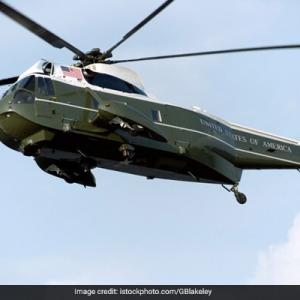
Iranian Laser Incident
Date: June 14, 2017
Iranian personnel aboard a boat shined a laser at a U.S. Marine helicopter in flight over the Strait of Hormuz in what was deemed by the U.S. Navy as “unsafe and unprofessional” behavior that threatened to impair the vision of the helicopter operator using night-vision goggles.Unlike the usual harassment of U.S. military assets at sea, this time it was carried out by the regular Iranian Navy, not the Islamic Revolutionary Guard Corps Navy (IRGCN).
-
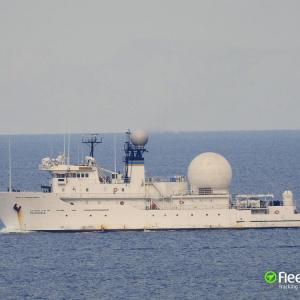
USNS Invincible Incident
Date: March 6, 2017
Fast moving Iranian boats, thought to belong to the Islamic Revolutionary Guard Corps Navy (IRGCN), approached the USNS Invincible while transiting with three British Royal Navy vessels through the Strait of Hormuz. U.S. officials said that the Iranian vessels stopped in front of the U.S. and British ships approximately 600 yards out, forcing them to change course to avoid a collision. Another Iranian ship sought to insert itself in between the U.S. and British ships. No warning shots or flares were fired in response to the Iranian provocations. -
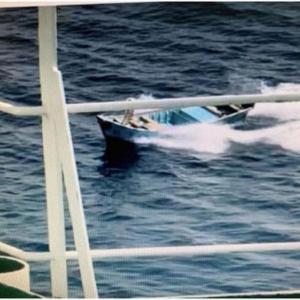
Al-Madinah Incident
Date: February 6, 2017
A Houthi skiff loaded with explosives rammed into a Saudi Al-Madinah class warship in the Bab el-Mandeb strait, exploding and killing two Saudi sailors and wounding three others. The Saudi press agency said that there were a total of three explosives-laden boats that approached the Saudi frigate, but that two of them had been repelled.The U.S. Navy later determined that the bomb boats were remote-control operated. Given the technological sophistication of the unmanned vessels, the U.S. Navy suspects that Iran was involved.
-
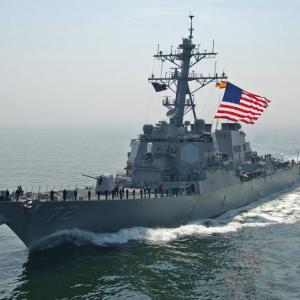
U.S.S. Mahan Incident
Date: January 9, 2017
Four Iranian speedboats fast approached the U.S.S. Mahan destroyer in international waters in the Strait of Hormuz, with deck-mounted weapons, manned. The speedboats came within 900 yards of the U.S. ship before it issued numerous warnings by way of radio calls, flares, and other signals. A U.S. Navy helicopter dropped smoke grenades, and finally, the U.S.S. Mahan fired warning shots from a .50 caliber machine gun to stave off the threat. The Iranian boats then stopped their approach. -
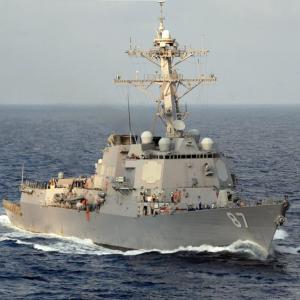
U.S.S. Mason Incident (#2)
Date: October 12, 2016
The U.S.S. Mason came under missile fire for a second time in three days, days after the U.S. Navy carried out retaliatory strikes against Houthi radar systems in retaliation for the October 9th attacks. A senior U.S. administration official said that there was “no doubt” the Houthis were behind the attacks, though the group’s motivation was not publicly reported at the time.A day after the second attacks, former Senator John McCain stated that Iran likely provided the missiles used in the attack. Iran’s Islamic Revolutionary Guard Corps’ Quds Force (IRGC-QF) or Lebanese Hezbollah were suspected of providing the Houthis with the training, technical, and targeting support, and may have been involved in directing the attacks.
-
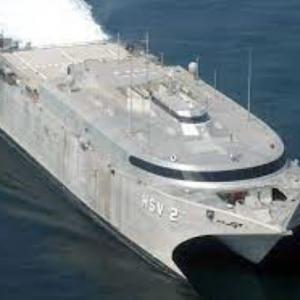
HSV-2 Swift Incident
Date: October 2, 2016
Iranian-backed Yemeni Houthi forces attacked a U.A.E. civilian vessel, the Swift, in the Red Sea in what U.A.E. officials called an act of “terrorism.” The ship sustained heavy damage (pictured to the left), but the U.A.E. reported that no one was injured.U.S. defense officials said that the ship was subsequently towed to Eritrea, and that the U.S. Navy had deployed vessels to the area where the attack occurred. The Houthis issued a statement claiming that its missiles destroyed a U.A.E. military ship advancing toward the Red Sea port of al-Mokha.
The Swift was reportedly carrying aid and medical equipment for the U.A.E. Army when it was targeted by the anti-ship missile.
-
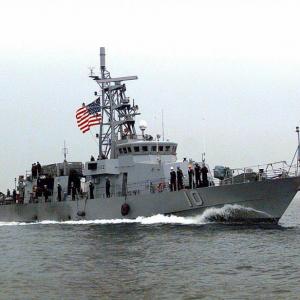
U.S.S. Firebolt Incident
Date: September 4, 2016
An Islamic Revolutionary Guard Corps (IRGC) vessel came within 100 yards of the U.S.S. Firebolt as it was transiting the central Persian Gulf, forcing the ship to change course. It was unclear at the time of the reporting whether the U.S. vessel took any additional measures in response to the close encounter. -
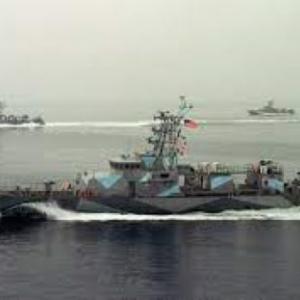
U.S.S. Squall Incident
Date: August 25, 2016
Three Iranian vessels sped toward the U.S.S. Squall and the U.S.S. Tempest as they were underway in the Arabian Gulf. Despite repeated auditory and visual warnings issued by U.S. Navy servicemen, the Iranian speedboats continued on their course, and came within 600 yards before veering away.After this incident, an Iranian Naser-class fast-attack craft came within 200 yards of the U.S.S. Tempest, at which point the U.S. Navy vessel fired three flares in an attempt to warn the Iranians and deescalate the situation; but the Iranians stayed their course. The U.S.S. Squall then fired warning shots, at which point the Iranian vessels dispersed, only to harass another U.S. Navy vessel present in the area, the U.S.S. Stout, which maneuvered out of the way of the approaching Iranian boats.
-
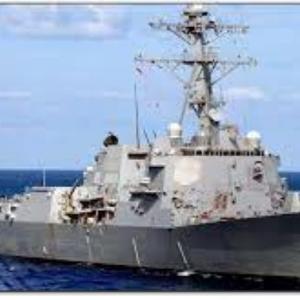
U.S.S. Nitze Incident
Date: August 24, 2016
A U.S. defense official said that four Islamic Revolutionary Guard Corps (IRGC) vessels did not respond to repeated radio communications or flares as they attempted to conduct a “high-speed intercept” of the U.S.S. Nitze. The U.S.S. Nitze was transiting international waters near the Strait of Hormuz, when the Iranian ships began to harass it. It was unclear whether the actions were carried out by rogue commanders in the IRGC or directed by senior officials in Tehran. -
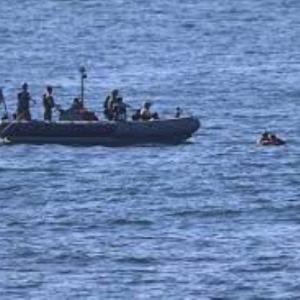
Adris Dhow
Date: March 28, 2016
The U.S.S. Sirocco Navy ship boarded a dhow, the Adris, which was transiting international waters in the vicinity of the Gulf of Oman.This resulted in the discovery of a large weapons cache aboard the vessel. The United States concluded that the arms had originated in Iran and the ship was likely bound for Yemen. The arms seized were found to be identical to those previously seized by France, which the United Nations had concluded were of Iranian origin.
After examination of the weapons and analysis of information provided, the Secretariat confirmed that the weapons seized were of Iranian origin and were shipped from Iran.
-
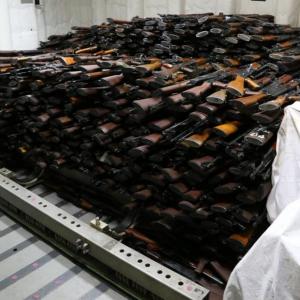
French Incident
Date: March 20, 2016
Sailors from the French Navy ship FS Provence intercepted a dhow off the coast of Oman. French government sources state the dhow was destined for Somalia.After examination of the weapons and analysis of information provided, the Secretariat confirmed that the weapons seized were of Iranian origin and were shipped from Iran.
The U.S. Navy accessed that the arms originated in Iran, and U.S. military sources say the shipment was likely intended for Houthi rebels in Yemen.
-
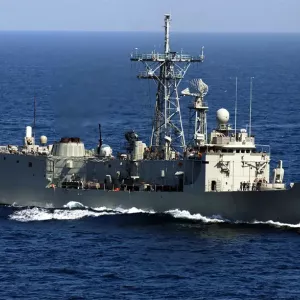
Australian Incident
Date: February 28, 2016
The February 2016, Australia’s HMAS Darwin intercepted the Samerr, a small fishing vessel found to be carrying a total of 2,197 weapons, including 100 Iranian-manufactured RPG-7-pattern rocket launchers. Coordinates entered into the dhow’s GPS navigation system revealed that it was bound for the port of Caluula, Somalia.Following the release of the ship, Iran said the ship was detained because of a legal dispute between the Danish company chartering it, Maersk, and a private Iranian firm.
-
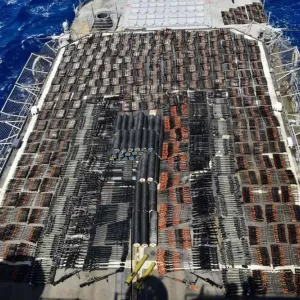
Menburt Cedar Incident
Date: February 16, 2016
Saudi-led coalition forces intercepted the Menburt Cedar en route to Yemen’s port of Hodeidah from Djibouti, and escorted the cargo ship to Saudi Arabia’s Jizan port for inspection. In the presence of international observers, Saudi authorities discovered military communication equipment and other hardware disguised as medical devices in containers that originated from the Bandar Abbas port in southern Iran. -
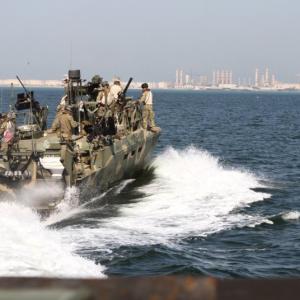
U.S. Navy Boats Seized by Iran
Date: January 12-13, 2016
A small U.S. Navy riverine vessel on a training mission in the Persian Gulf experienced technical difficulties and drifted into Iranian waters, at which point the Iranian coast guard captured two U.S. Navy vessels and detained their crews on the Farsi Island. It was unclear whether the sailors, conducting routine exercises in accordance with international law, had been captured before straying into Iranian territory.A day later, Iran freed the ten American sailors that it had detained. Former Secretary of State John Kerry issued a Tweet asserting that the release of the sailors evidenced successful diplomacy. He issued a statement expressing “his gratitude to Iranian authorities for their cooperation.”
-
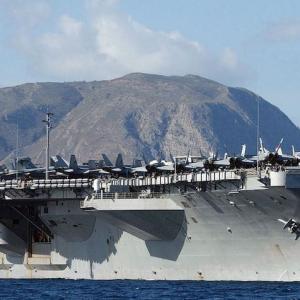
U.S.S. Harry Truman Incident
Date: January 12, 2016
An Iranian drone flew over the U.S.S. Harry Truman and the French Charles de Gaulle aircraft carriers operating in international waters in the Persian Gulf. The U.S. Navy described the drone’s behavior as “abnormal and unprofessional.” In response, the Truman launched a Navy helicopter to assess the threat and determined that the drone was not weaponized.Iran’s semi-official Fars News Agency reported that, in addition to the surveillance drone, an Iranian submarine was also deployed near the U.S. aircraft carrier on an intelligence gathering mission.
-
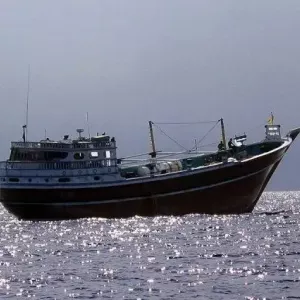
Saudi Incident
Date: September 30, 2016
Saudi-led coalition forces announced the seizure of an Iranian fishing boat carrying weapons bound for Houthi militias in Yemen.The coalition said the boat contained 18 anti-armor Concourse shells, 54 anti-tank shells, shell battery kits, firing guidance systems, launchers, and binocular batteries. Fourteen Iranian sailors were also detained on the boat, which was seized off the coast of southern Oman.
-
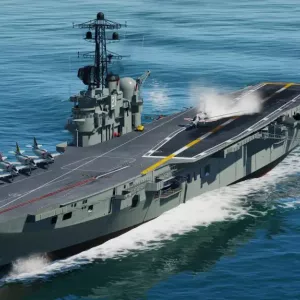
Australian Incident
Date: September 24, 2015
In September 2015, an Iranian registered dhow en route from Chabahar port in Iran was interdicted by the Australian naval vessel HMAS Melbourne while carrying cargo primarily composed of 75 anti-tank missiles bound for Somalia.The master of the FV Nasir, the interdicted vessel, was in contact with known arms dealers with links to a former pirate, Isse Mohamoud Yusuf, and the leader of the ISIL faction in Somalia, Abdulqadir Mumin.
-
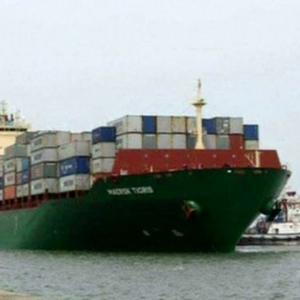
Maersk Tigris Incident
Date: April 28, 2015
Shipper: Maersk A/S
IRGC patrol vessels ordered the Maersk Tigris, a Marshall Islands-flagged cargo vessel, to stop as it was underway in the Strait of Hormuz on its way into the Persian Gulf. The patrol boats then fired warning shots across the container ship’s bridge and was boarded by members of the IRGC Navy.The ship was then escorted by Iranian patrol boats to the Iranian port of Bandar Abbas.
-

Israeli Interception
Date: March 5, 2014
The Panamanian-flagged cargo vessel, Klos-C, was interdicted in the Red Sea by Israeli naval authorities. Cargo found aboard the vessel included 40 M-302 rockets, 181 120-mm mortars, and approximately 400,000 rounds of ammunition. The cargo was concealed in shipping containers among bags of cement.According to Israeli authorities, 100 containers, including those containing the armaments, were loaded onto the vessel in the Iranian port of Bandar Abbas.
-
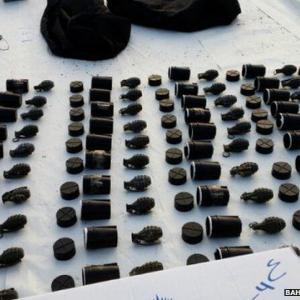
Bahrain Incident
Date: December 28-29, 2013
Bahrain’s Coast Guard and police jointly intercepted a vessel in Bahraini coastal waters, seizing assorted explosive materials, including what was described as Iranian-produced bombs. -
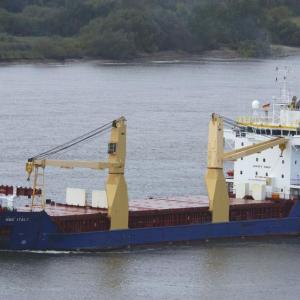
Atlantic Cruiser Incident
Date: April 2012
Shipper: Bockstiegel C.E.G. Bulk CharteringIn April 2012, the Atlantic Cruiser, a German-owned ship allegedly carrying Iranian military equipment bound for Syria, was halted in the Mediterranean. Defectors in the Syrian government apparatus tipped off authorities about the weapons cargo.
The ship had been chartered by a Ukrainian company called White Whale Shipping and was bound for Tartus, Syria.
-
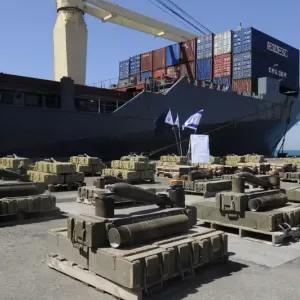
Victoria Incident
Date: March 2011
Shipper: CMA CGMIn March 2011, Israeli forces intercepted the vessel Victoria in international waters in the Mediterranean, stating that it was carrying weapons by Iran via Syria. According to Israeli officials, the arms shipments included 60 millimeter and 120 millimeter mortar shells and between two and four Chinese-made C-704 shore-to-sea missiles. Israel says the ultimate destination of the cargo was the Hamas-controlled Gaza Strip.
The vessel was chartered by French container shipper CMA CGM. In a statement, CMA CGM said, "The ship's manifests do not show any cargo in contravention [of] international regulations, and we do not have any more information at this stage."
-
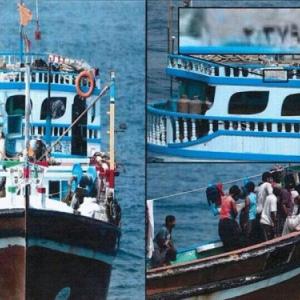
Unnamed Vessel
Date: February 21, 2011
An Iranian fishing vessel was seized by Yemeni authorities seven kilometers from the coast of Hadramawt governorate after it pursued a Yemeni fisherman in Yemeni territorial waters.An investigation by Yemeni authorities showed that the vessel carried a shipment of weapons comprising 900 Iranian-made anti-tank and anti-helicopter rockets intended for Houthi rebels.
-
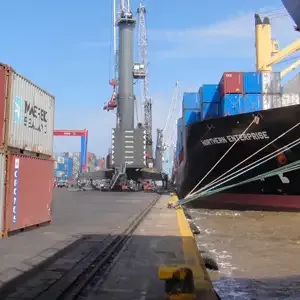
Nigeria Incident
Date: October 2010
Shipper: CMA CGM
On October 26, 2010, Nigerian authorities seized 13 shipping containers carrying illegal Iranian weaponry at Lagos’ Apapa Port. The containers included 107 mm artillery rockets [Katyushas], explosives and rifle ammunition. The arms were to be shipped next to Gambia, with the final destination of the cargo possibly the Gaza StripThe MV CMA CGM Everest originally picked up the containers from the Iranian port of Bandar Abbas. CMA CGM says it was a victim of a false cargo declaration, claiming the weapons were shipped in packages labeled as "glass wool and pallets of stone" and that the Iranian shipper "does not appear on any forbidden persons listing."
In November, Nigeria reported the seizure of the illegal arms shipment to the UN Security Council, accusing Iran of violating UN Resolution 1929. The resolution bans Iran from "supplying, selling or transferring directly or indirectly from its territory or by its nationals… any arms or related material." Two Nigeria-based members of the Quds Force, an elite unit of the IRGC, were implicated in the arms shipment.
-
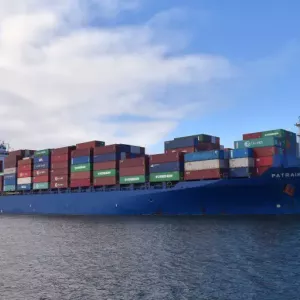
Singapore Incident
Date: September 30, 2010
Shipper: Zhejiang Bainianyin Industry & Trade Co., Ltd
Aluminum powder from North Korea that could be used to make solid propellant for missiles was seized on a ship in Singapore harbor. The ship, the STX Patraikos, was en route to Bandar Abbas, Iran, from Ningbo, China, when it was stopped by Singaporean authorities. -
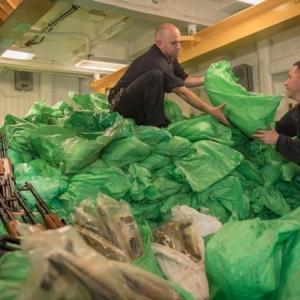
Italy Explosives Seizure
Date: September 2010
Shipper: MSC
In September 2010, Italian police seized 7 tons of RDX explosives from an MSC-owned ship in the port of Gioia Tauro. Italian police believe the explosives, which were hidden behind sacks of powdered milk, were in indirect transport from Iran to Syria. -
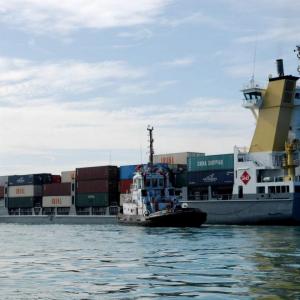
Francop Affair
Date: November 2009
Shipper: Francop Schiffahrts GmbH
On November 4, 2009, Israeli commandos boarded the MV Francop near the coast of Cyprus. The ship was full of weapons from Iran destined for Hezbollah in Lebanon or Syria. The cargo included more than 300 tons of weaponry, including "thousands of medium-range 107- and 122-millimeter rockets, armor-piercing artillery, hand grenades and ammunition for Kalashnikov rifles."The MV Francop is owned by the German company Francop Schiffahrts GmbH & Co and was operated by United Feeder Services, a Cypriot company. The ship is now operated by the Dutch company BG Freight Line BV.
-
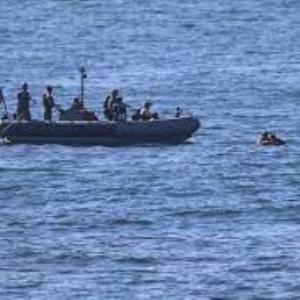
Mahan 1 Dhow
Date: October 25, 2009
The Yemeni Navy seized in Yemeni territorial waters an Iranian vessel named Mahan 1. According to Yemeni authorities, among the crew were 5 Iranians. The First Instance Court of Sana’a convicted the crew of the Mahan 1 of smuggling arms from Iran to Yemen. -
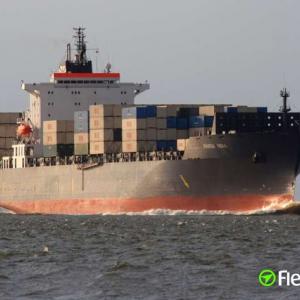
Suez Incident
Date: October 12, 2009
Shipper: Leonhardt & Blumberg
In October 2009 U.S. soldiers boarded the German Hansa India in the Suez Canal and seized a weapons cache. Seven containers contained 7.62mm ammunition and the eight enclosed cartridges suitable for the manufacture of additional rounds.“Investigators suspect that the arms were part of an Iranian shipment bound for either the Syrian army or for Hezbollah, the militant Islamist group. US officials have pointed out that the delivery is in violation of United Nations Security Council Resolution 1747, which prohibits arms shipments either into or out of Iran."
The ship is owned by Leonhardt & Blumberg, a Hamburg-based shipping company. According to Leonhardt & Blumberg, the ship has been under charter for years to the state-owned shipping company Islamic Republic of Iran Shipping Lines.
-

UAE Incident
Date: July 2009
Shipper: CMA CGM
In July 2009, the UAE seized a shipment of weapons from North Korea destined for Iran. The shipment was made in violation of UN Security Council Resolution 1874 which bans all North Korean Arms exports.The weapons, which included RPGs, detonators, ammunition, and rocket propellant, were shipped by a Bahamian-flagged ANL-Australia vessel, which is a wholly-owned subsidiary of French container shipper CMA CGM.
The weapons were exported by Italian company Otim, which had the cargo listed as oil drilling equipment.
-

Cyprus Incident
Date: January 19, 2009
Shipper: Murmansk Shipping Co (Subsidiary of Lukoil JSC)
In January 2009, the U.S. stopped and boarded the MV Monchegorsk, a Russian-owned, Cypriot-flagged vessel chartered by the Islamic Republic of Iran Shipping Lines. The ship, bound for Syria, was found to be carrying weapons in violation of the UN Security Council’s ban on Iran exporting arms.The ship was detained in Cyprus, where local authorities confiscated and impounded 98 barrels of munitions that contained 3,300 cases of high explosives as well as shell casings and primers.
On July 11, 2011, those stored Iranian munitions accidentally exploded (pictured) at a Cypriot naval base, killing 12 people in Cyprus’ worst peacetime military accident.
Receive Iran News in Your Inbox.
Eye on Iran is a news summary from United Against Nuclear Iran (UANI), a section 501(c)(3) organization. Eye on Iran is available to subscribers on a daily basis or weekly basis.
Receive Iran News in Your Inbox
The Iran nuclear deal is done. And the world's biggest companies have already visited Tehran ready to strike a deal when sanctions end. These businesses will add even more to Iran's bottom line. And that means continued development of nuclear technologies and more cash for Hamas and Hezbollah.